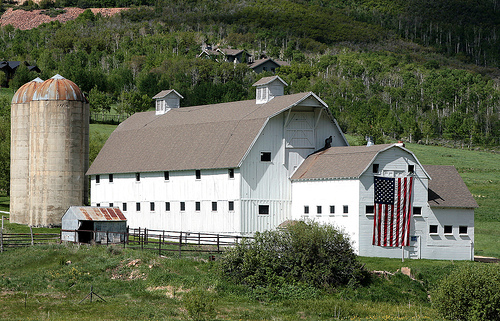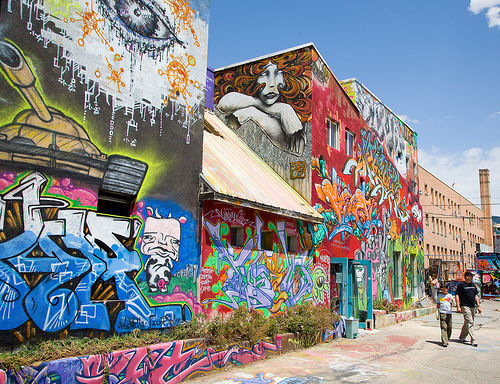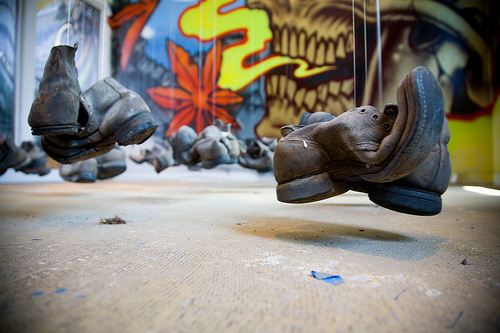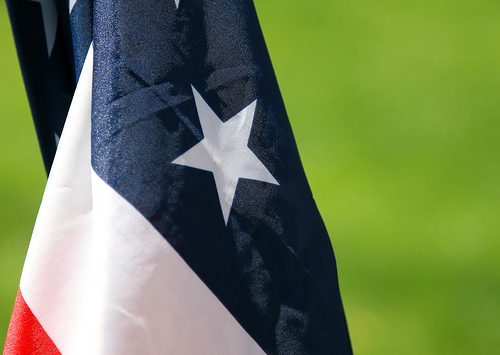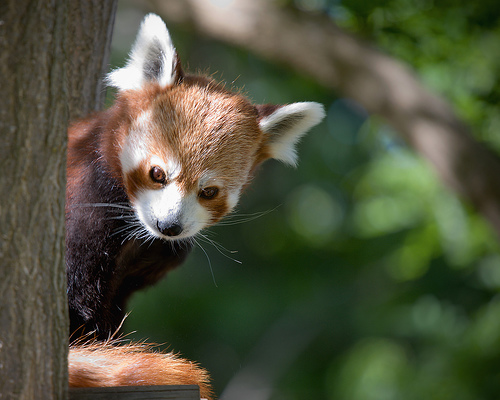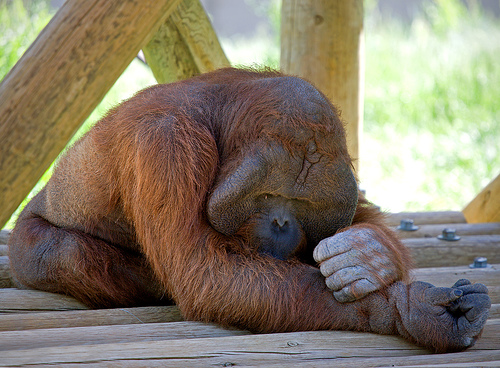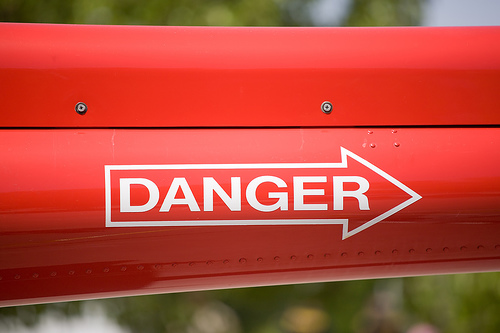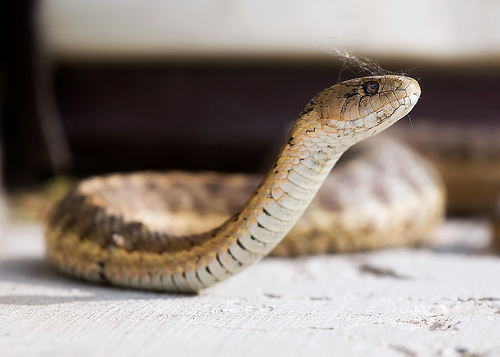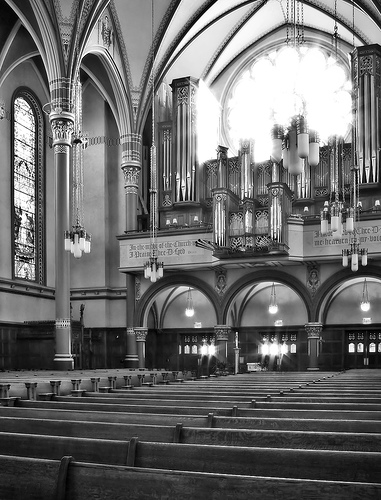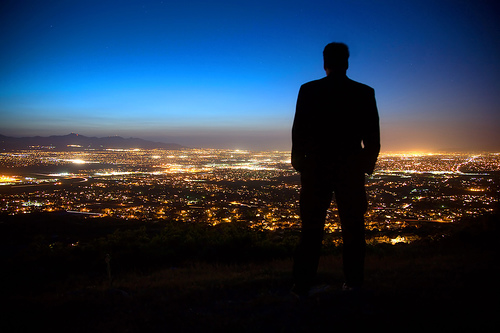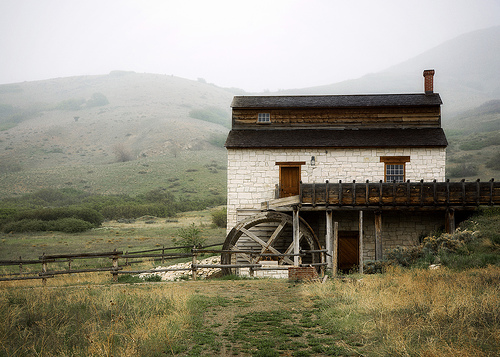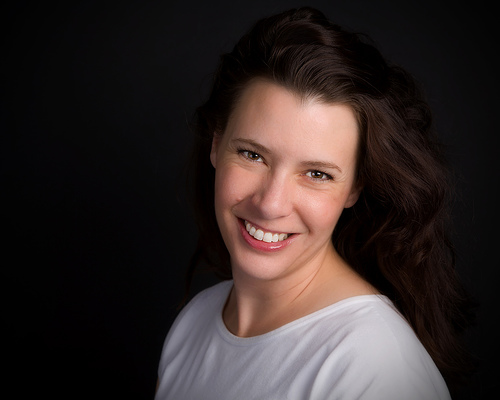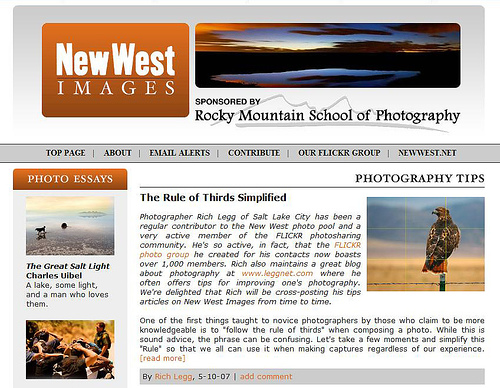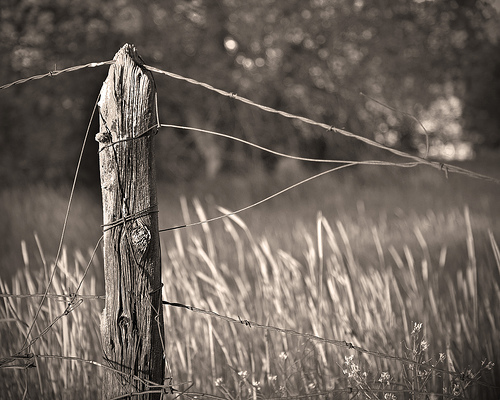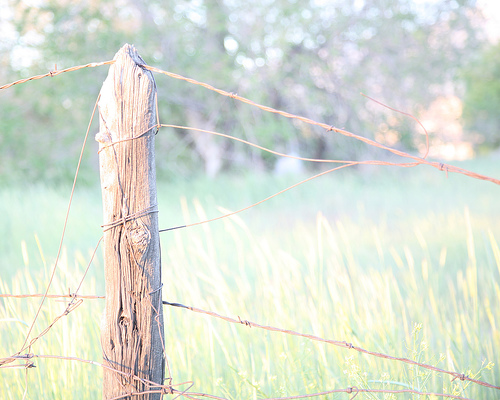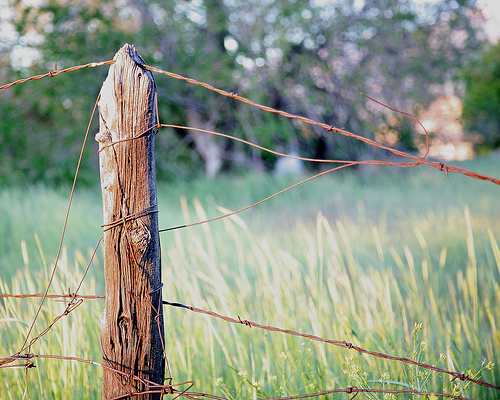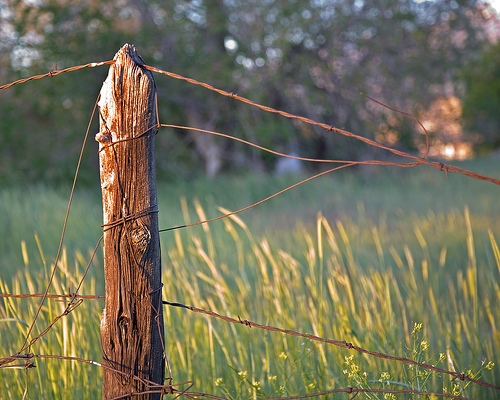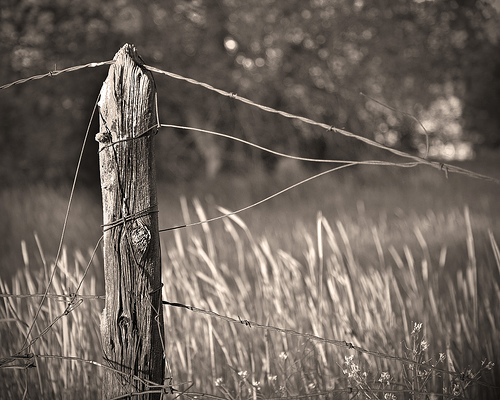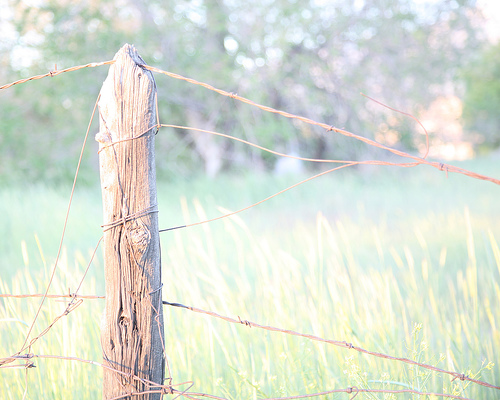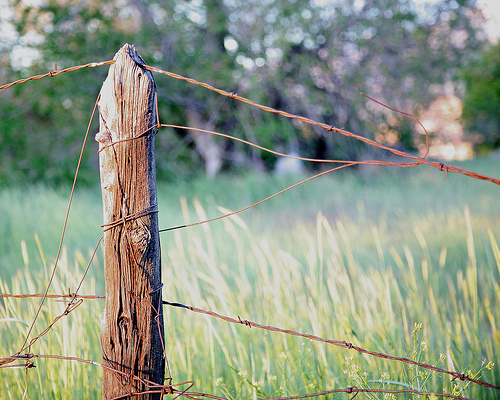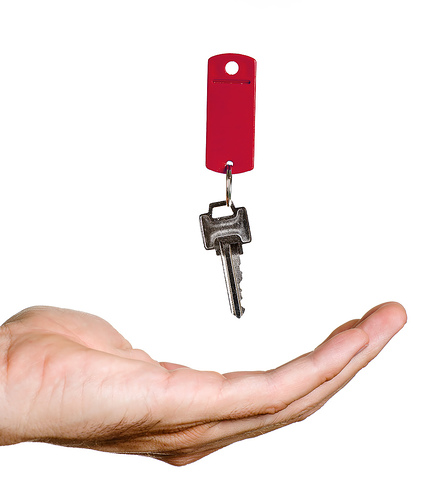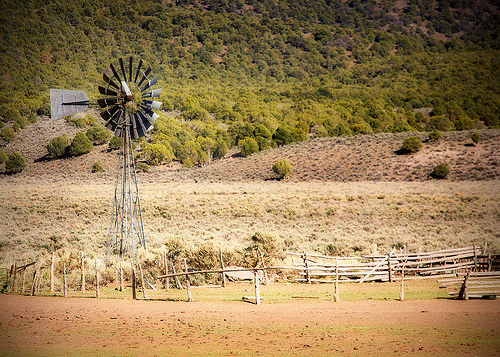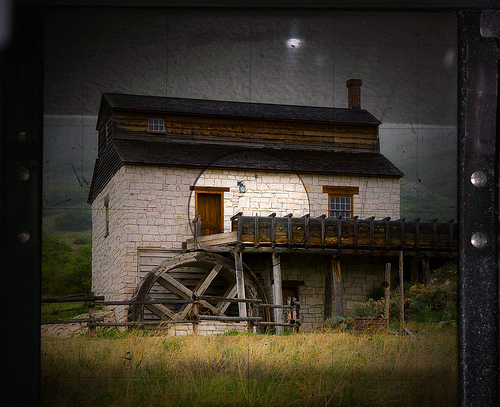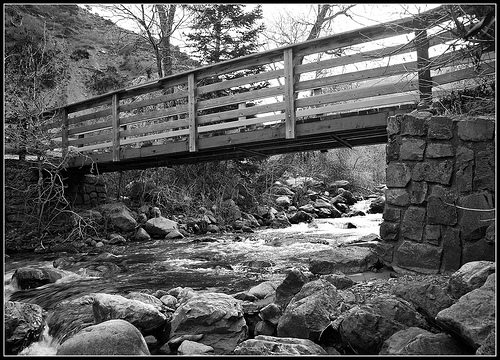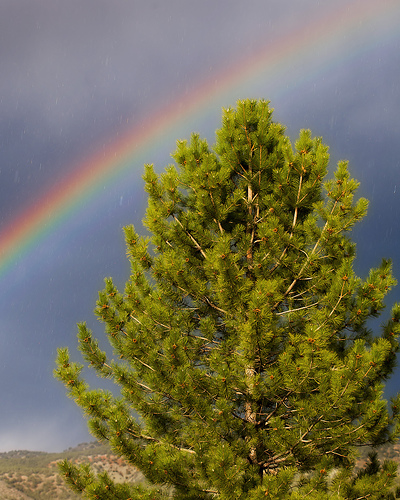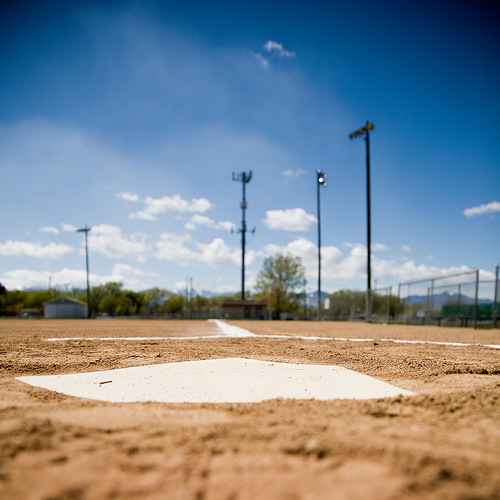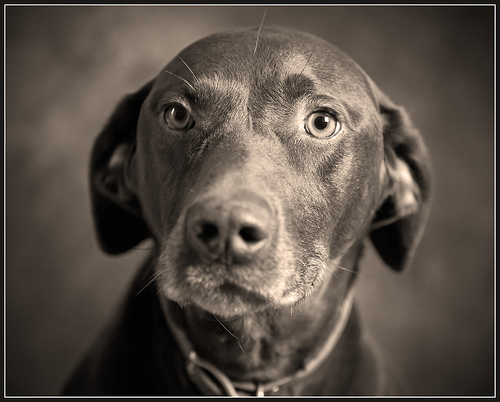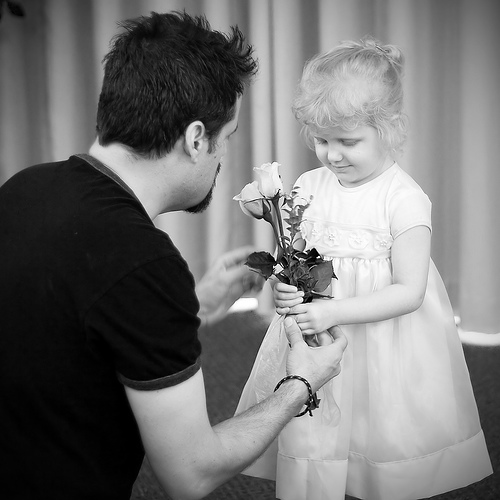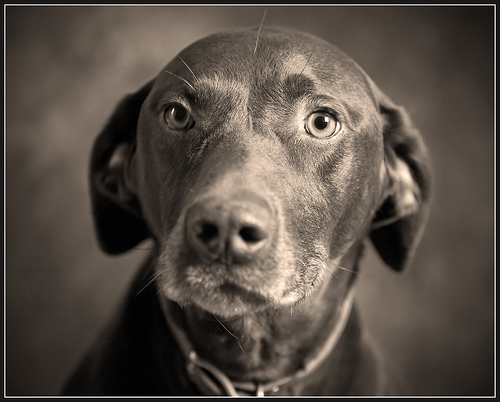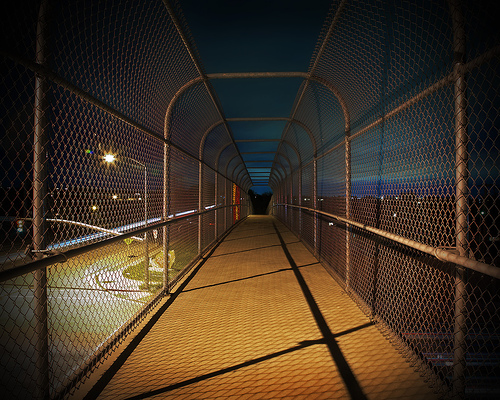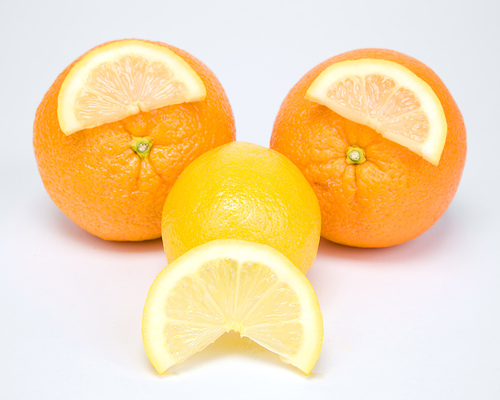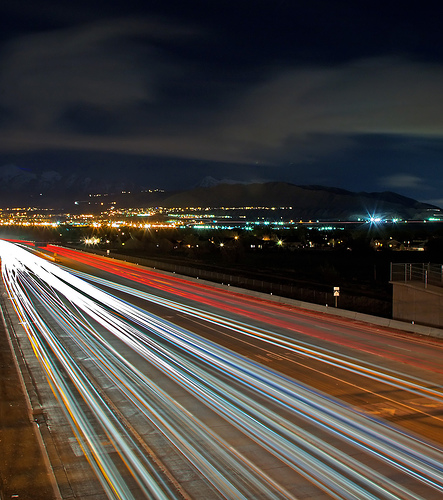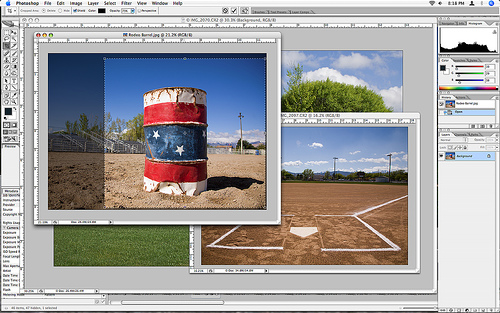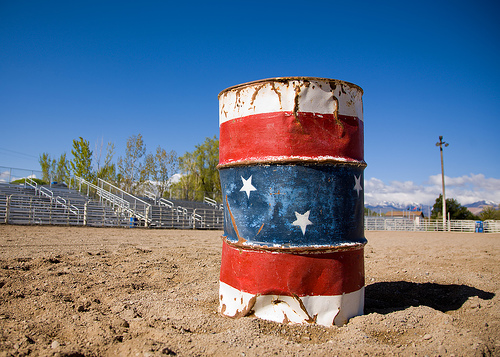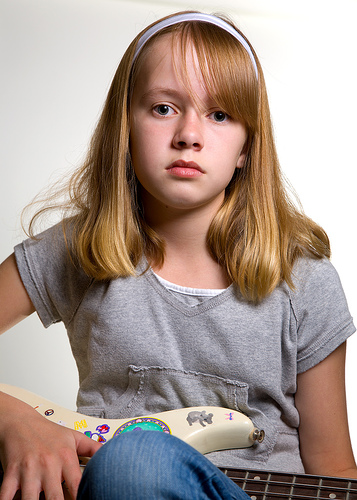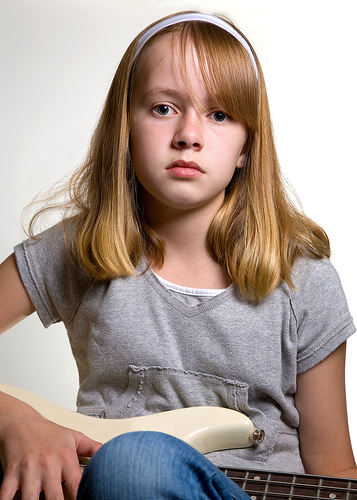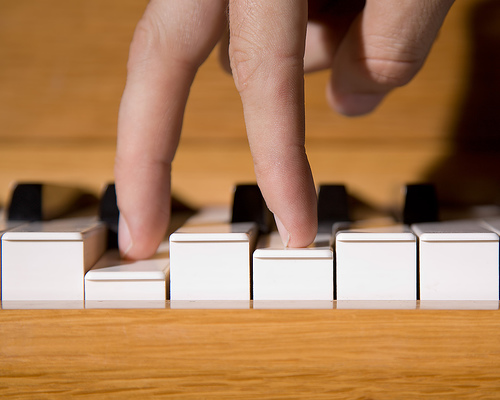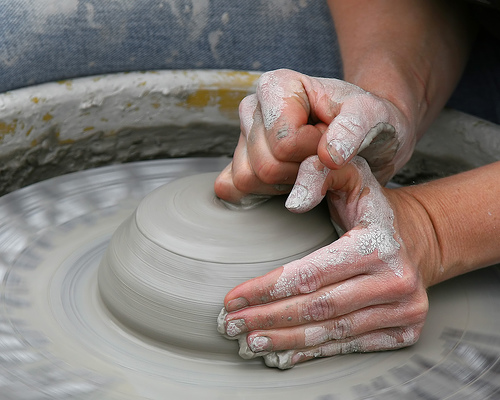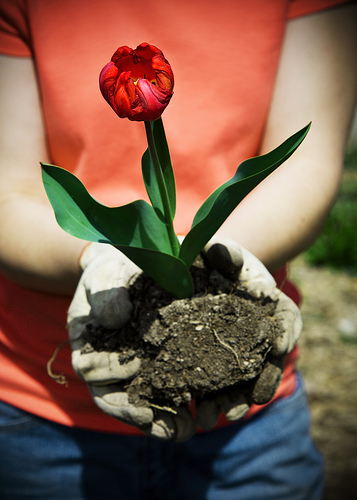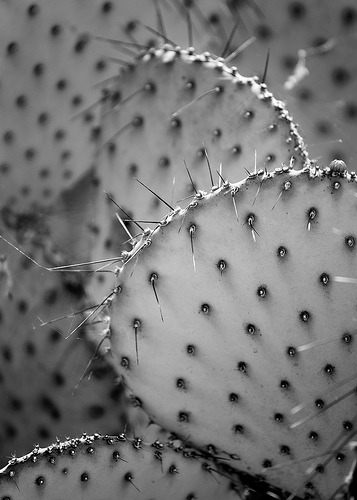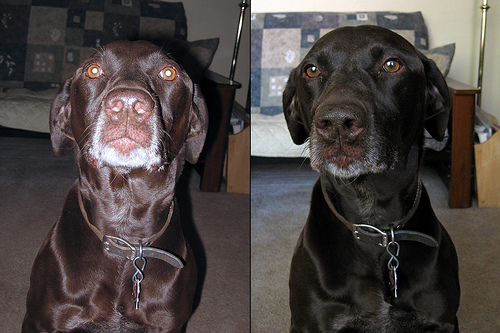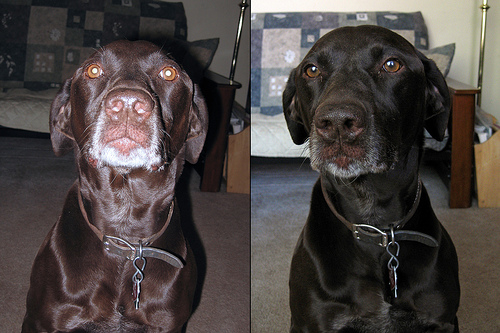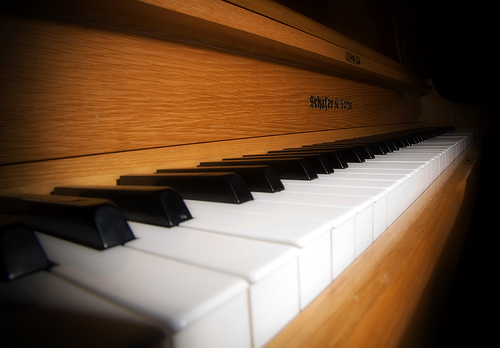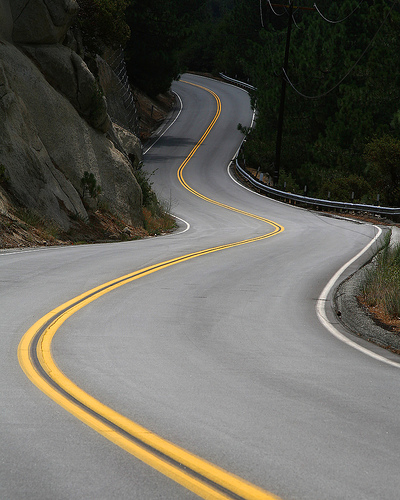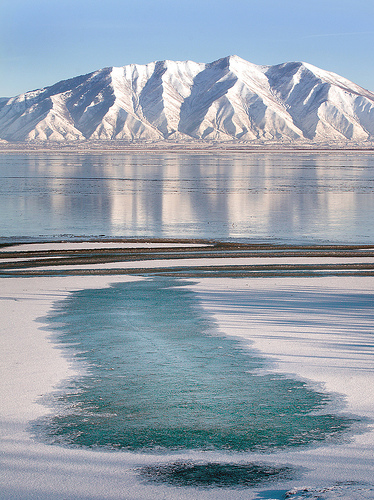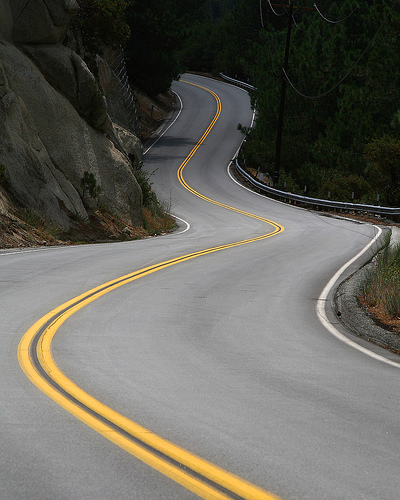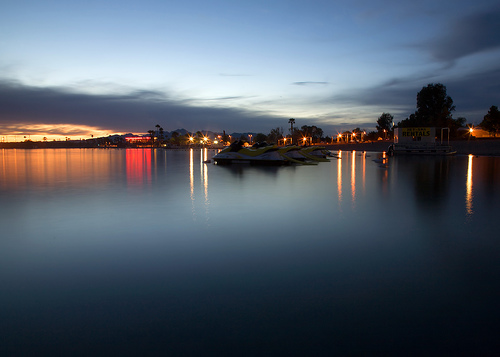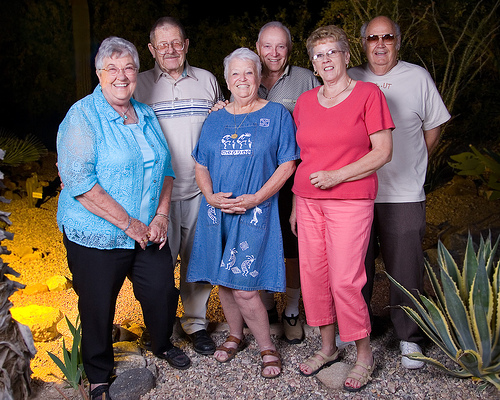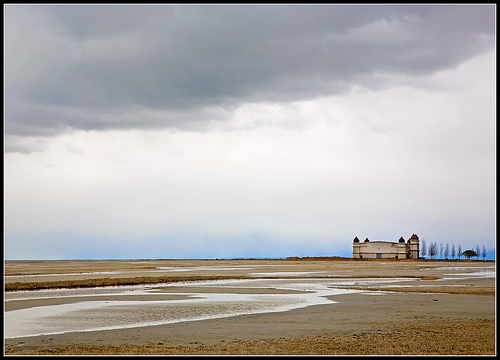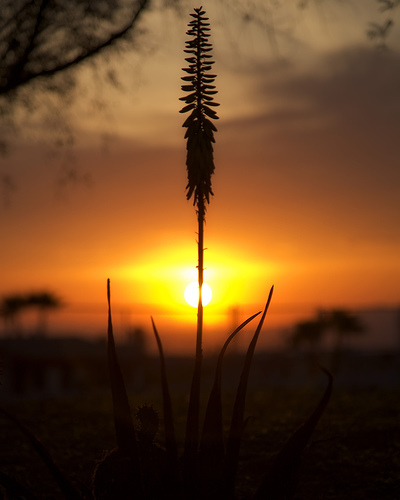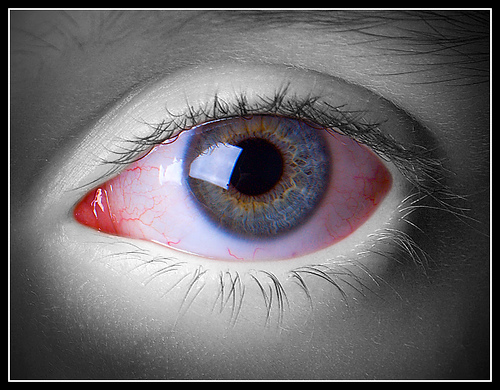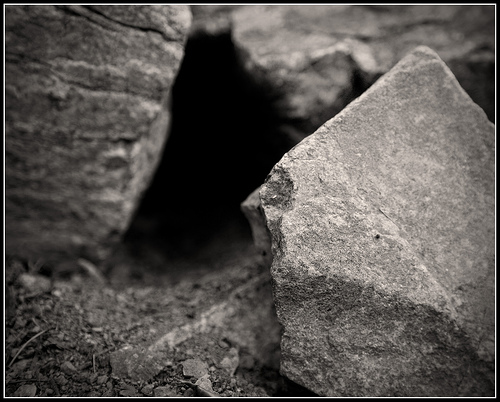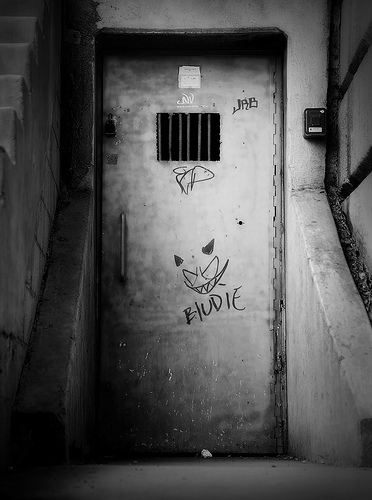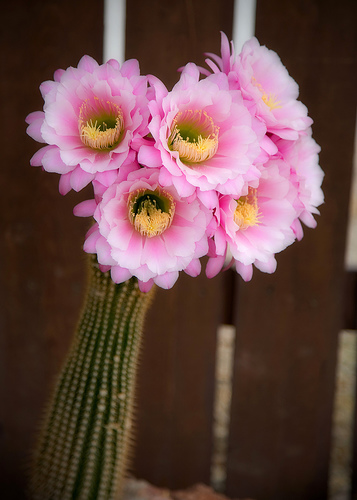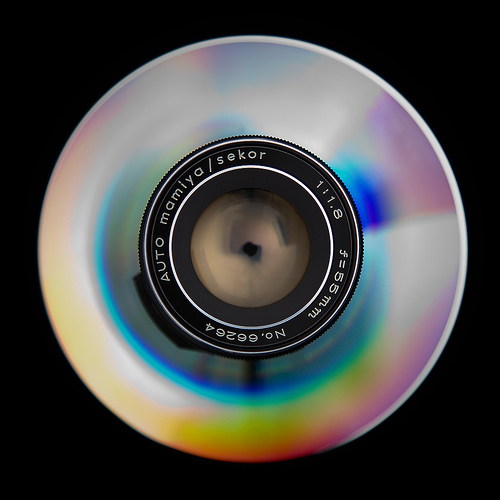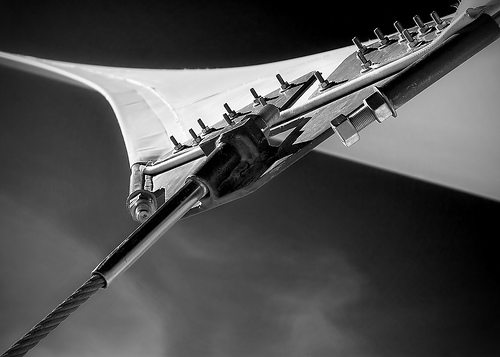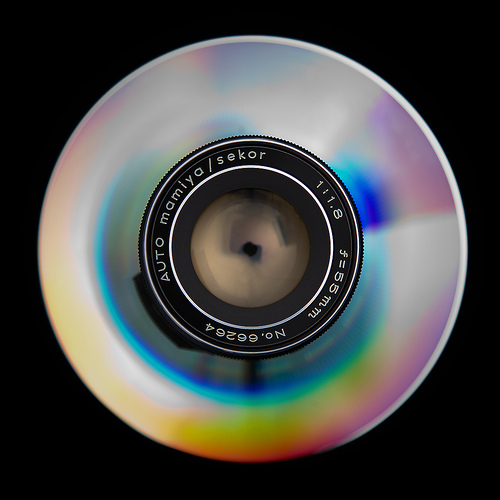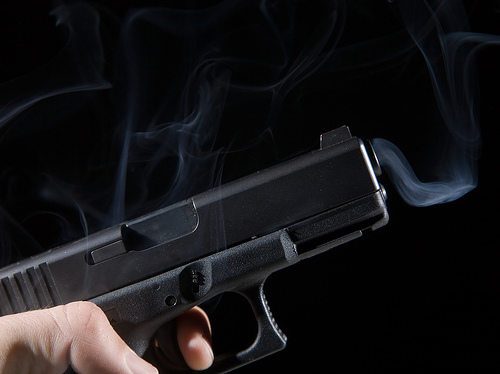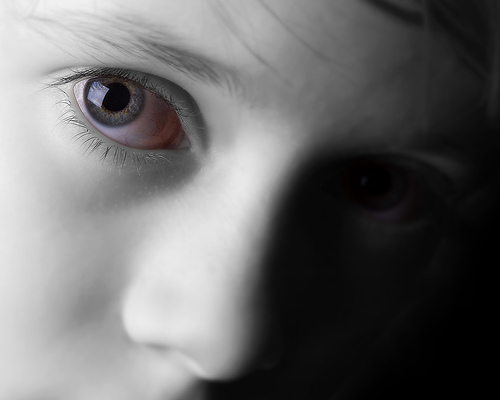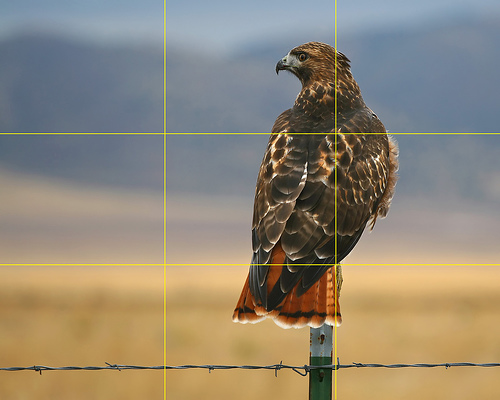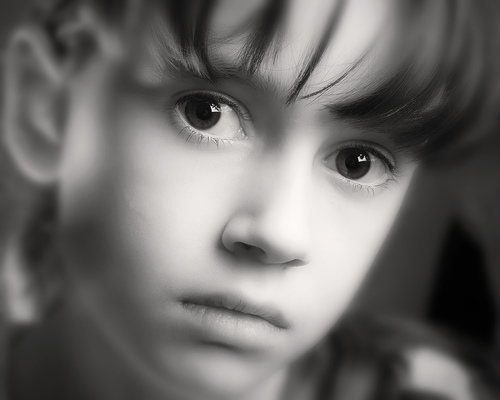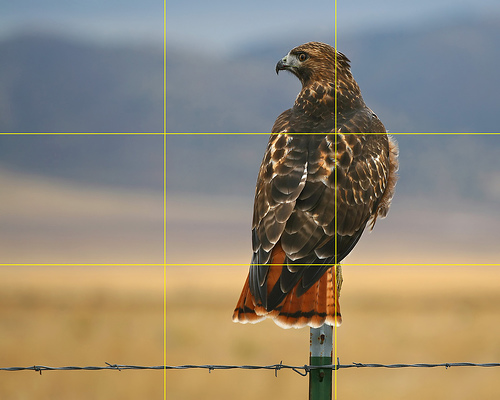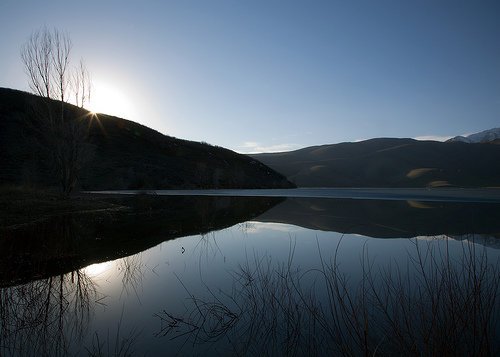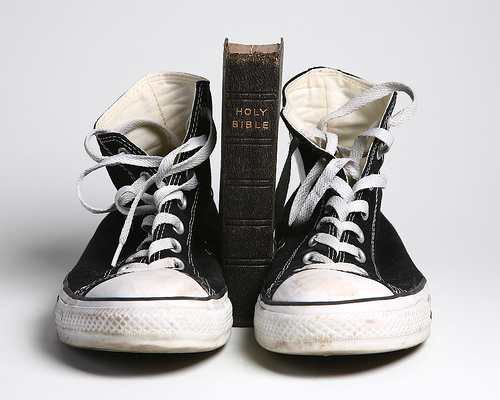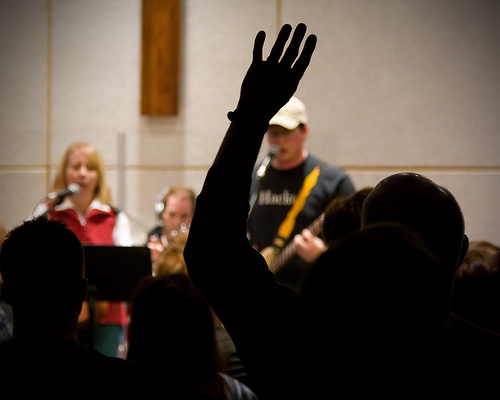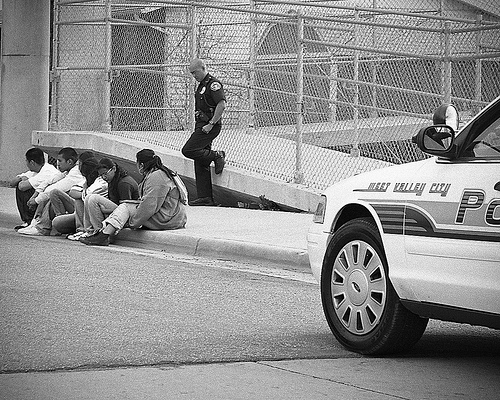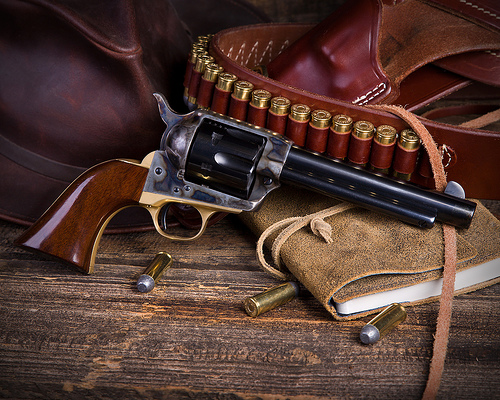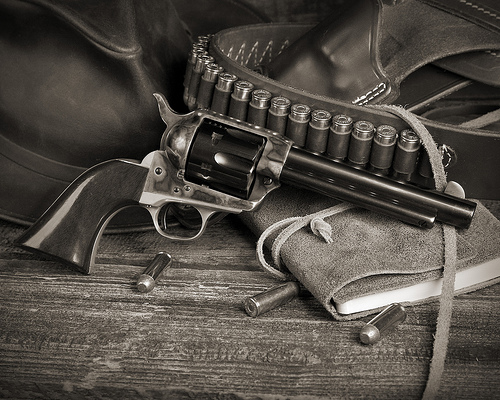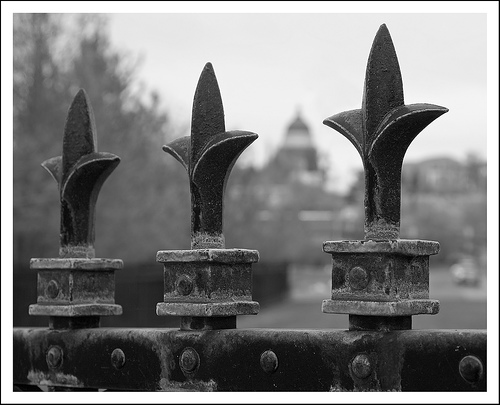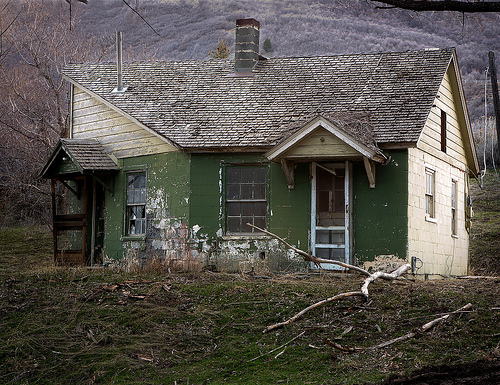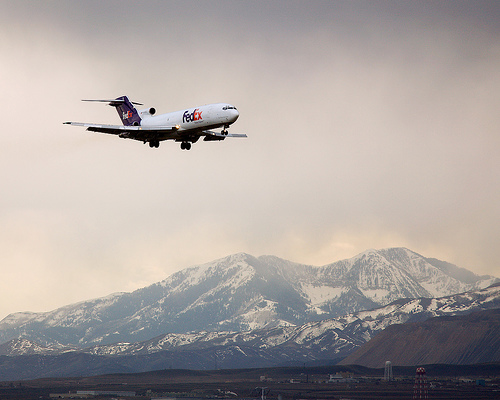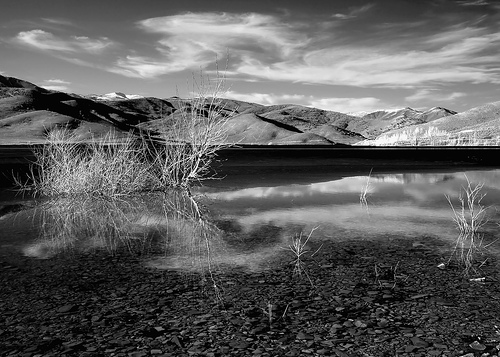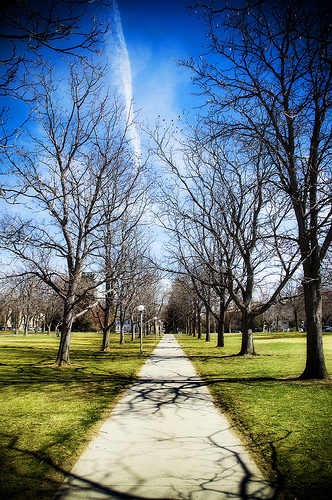May 27, 2007
The 337 Project
I went in to Salt Lake City yesterday to check out the 337 Project. This fairly large scale work involved 144 artists adding their artistic interpretation to a soon-to-be-demolished building. Literally each of the building’s 42 rooms and every exterior surface has been given a unique style and feel by the creations of the participating artists.
It was exciting to see the effort that these dedicated artisans put into a project that is actually very temporary. After the completion of the public showing, the building will be razed to make way for a new condominium/office building.
It you are in Northern Utah and want to check it out, today (Sunday) is the final day. There is no cost to enter, though if it is like yesterday there will probably be a slight wait (around 30 minutes for me). The building is located at 337 S. 400 East. There is plenty of free on-street parking.
For more info, visit the project’s website at www.337project.org. You can view my complete photoset from yesterday by clicking here.
Photo 1: Canon 5D, Canon 24-105 f/4L IS lens – 1/400 second, f/6.3, ISO 100
Photo 2: Canon 5D, Canon 24-105 f/4L IS lens – 1/15 second, f/4, ISO 160
May 26, 2007
Red, White, Blue and Green
If you’re in the US, enjoy your three-day-weekend!
Canon 30D, Canon 24-105 f/4L IS lens – 1/500 second, f/4, ISO 100
Labels: holiday
May 25, 2007
How Slow Can You Shoot Handheld?
One of the quickest ways to ruin a good shot is to use too slow of a shutter speed in relation to your lens’ focal length. A fast shutter speed is not only useful in capturing action shots, but it also will eliminate camera shake blur in your photo. We all love a long lens, but with that length comes the potential for blurry shots. When you are using a telephoto lens, every little bit of movement of the camera gets magnified many times over in the viewfinder.
Back in my 35mm film SLR days, I used the simple rule of placing “1/” over my lens’ focal length to determine my slowest shutter speed to safely shoot handheld. For example, if I was using a 200mm lens, the slowest I would set my shutter speed to is 1/200 second. But now that we are in the digital age with cameras that have “crop factors” of 1.5 or 1.6, we have to amend this rule a bit. If you are shooting with one of these cameras, simply take your lens’ focal length and multiply it by 1.5 and then convert it to a shutter speed. So now that 200mm lens needs a shutter speed of 1/300 of a second or faster to safely shoot handheld.
Over time, many photographers develop a steady hold and can amend their handheld shutter speeds to allow for less shake of the camera. I find now that I can safely handhold a shot at one to two f/ stops longer of a shutter speed than this equation recommends. Today’s image of a Red Panda taken at Utah’s Hogle Zoo is an example. I handheld this shot with a shutter speed of 1/50 second and a focal length of 280mm. While the image is not as “tack sharp” as I would like, it is definitely usable.
Like most rules in photography, this one is not set in stone. Feel free to experiment with combinations of shutter speed and lens length. I believe that it is better to have a slightly blurry photo (due to camera shake) than to not have taken one at all.
Canon 5D, Canon 70-200 f/4L lens with 1.4x extender – 1/50 second, f/5.6, ISO 160
Labels: animal, photography, tutorial
May 24, 2007
LIttle Pink Houses
]]> 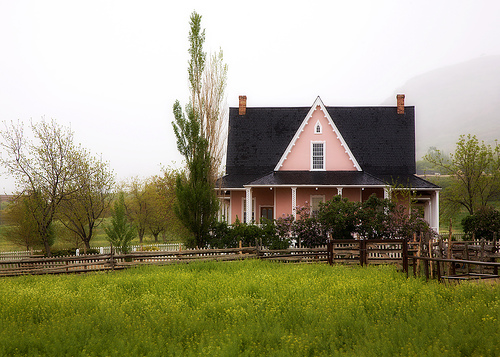
Oh, but ain’t that America, for you and me
Ain’t that America, we’re somethin’ to see, baby
Ain’t that America, the home of the free
Little pink houses for you and me
. . . John Mellencamp, 1983 . . .
Canon 5D, Canon 24-105 f/4L IS lens – 1/100 second, f/10, ISO 100
Labels: buildings, salt lake city
May 21, 2007
On Streets We Call The Zoo
I spent Saturday morning on a sixth grade field trip to Salt Lake City’s Hogle Zoo. While it’s always great to have the opportunity to photograph interesting subjects, seeing the animals in captivity was a somber experience for me. Many of them appeared to be bored and depressed. The orangutan featured in today’s capture is one example of this. He seemed to be very uninterested with the whole zoo scene, spending his time motionlessly staring at nothing in particular.
Canon 5D, Canon 70-200 f/4L lens with 1.4x extender – 1/50 second, f/5.6, ISO 160
Labels: animal
May 20, 2007
DANGER
dan · ger [deyn-jer]
–noun
1. liability or exposure to harm or injury; risk; peril.
2. an instance or cause of peril; menace.
3. Obsolete. power; jurisdiction; domain.
Canon 5D, Canon 70-200 f/4L lens – 1/1250, f/4, ISO 160
LeggNet’s Digital Capture
© Rich Legg, Inc. All rights reserved.
May 19, 2007
Sign, Sign, Everywhere a Sign
]]> 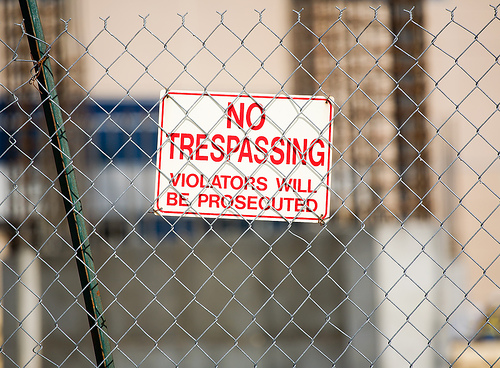
And the sign said anybody caught trespassin’ would be shot on sight
So I jumped on the fence and yelled at the house,
“Hey! What gives you the right?”
“To put up a fence to keep me out or to keep mother nature in”
“If God was here he’d tell you to your face, Man, you’re some kinda sinner”
. . . Les Emmerson, AD 1970 . . .
Canon 5D, Canon 70-200 f/4L lens – 1/1600 second, f/4, ISO 100
May 18, 2007
An Uninvited Guest
Last night as Michelle was exiting our front door she came across an uninvited guest on the front steps. The visitor was an approximately 20″ snake. Michelle rapidly re-entered the house and announced her discovery.
The girls and I quickly investigated. The snake was fairly docile and didn’t seem to care much about the attention. After an impromptu photo session, I safely escorted the visitor away from our home and into the field directly behind the house.
I am no snake expert (nor do I want to become one), but I did a bit of Googling and this appears to my untrained eye to be a Desert Nightsnake. If any of you snake-wranglers out there know for sure, feel free to chime in and either correct or support my analysis.
Canon 30D, Canon 70-200 f/4L lens – 1/125 second, f/5.6, ISO 160
Labels: animal
May 16, 2007
Cathedral
Canon 30D, Canon 24-105 f/4L IS lens – 20 seconds, f/20, ISO 100
Labels: buildings, salt lake city
May 15, 2007
With a Nod to Thomas Hawk
One of the people that inspired me to begin my blog is a tech blogger out of San Francisco named Thomas Hawk. Thomas is an extremely active photographer on both Flickr and Zooomr and pens a very popular blog at thomashawk.com. If you haven’t seen his work, I strongly encourage you to drop by his blog or his photostream and check it out.
It was after reading Thomas’ blog in 2005 that I became involved in Flickr and ultimately started LeggNet’s Digital Capture. Since that time I have followed his writing and photography on a daily basis.
Today’s capture is inspired by Thomas’ numerous self portraits taken in this style, including one last week that cost him a lens (but thankfully not his 5D). I took this above Draper Utah overlooking the Salt Lake Valley just after sunset. The best part was how peaceful it was as I sat waiting for the right light.
Links to Thomas Hawk’s Work:
Blog: thomashawk.com
Flickr Photos: flickr.com/photos/thomashawk
Zooomr Photos: beta.zooomr.com/photos/thomashawk
Canon 5D, Canon 24-105 f/4L IS lens – 10 seconds, f/4, ISO 160
May 14, 2007
Old Country Mill
Old Country Mill, taken at This Is The Place Heritage Park on a rainy Saturday in Salt Lake City, Utah.
Canon 5D, Canon 24-105 f/4L IS lens – 1/125 second, f/5.6, ISO 50
Labels: buildings, salt lake city
May 13, 2007
Mother’s Day
This Sunday is Mother’s Day in the United States. In honor of the holiday, today’s image is a portrait of the mother of my children – my lovely wife Michelle.
The set-up on this portrait is my standard simple arrangement:
I have a small softbox to the right of the camera for the main light. The fill light is provided by a medium white umbrella placed camera left and set at a power level one f-stop below the main light. A black paper roll provides the dark unlit background.
Canon 5D, Canon 24-105 f/4L IS lens – f/10, 1/60 second, ISO 100
Labels: portrait
May 12, 2007
New West Images
For the better part of the past year I have participated in a Flickr group created by the New West Network, an online web magazine featuring information relating to the Rocky Mountain region. On several occasions the magazine has featured one of my photos on their main page. Through the participation in the group I have gotten to know their photo editor Chris Lombardi.
Chris recently started a new feature of the magazine called New West Images, a blog about western photography and photobloggers. I was honored this past week when Chris invited me to cross post some of my photographic tutorials from this site onto the blog. The first of these tutorials, one on the Rule of Thirds, was posted this past Thursday (view it here).
Please take a moment and check out the site. If you like it, go ahead and bookmark it or add it to your RSS reader. The folks at New West are great supporters of the internet photography community and deserve the support.
Links
New West Images: www.newwest.net/index.php/gallery
New West Images RSS feed: www.newwest.net/index.php/gallery/rss/
New West Flickr Group: flickr.com/groups/newwest
New West Network: www.newwest.net
May 11, 2007
Want Greater Photographic Flexibility? – Shoot RAW
One of the choices that face digital photographers is the format in which to save their images. Most advanced digital cameras offer several choices of format to choose from. A typical selection would be something like this:
– Small .JPG
– Medium .JPG
– Large .JPG
– RAW
Today I am going to talk a bit about the last selection on the list – RAW. A RAW image is essentially the unprocessed capture taken directly from the camera’s sensor. When the camera captures an image in the JPG format, the on-camera software processes the file before saving it. This processing includes such things as contrast, color saturation, sharpening, etc. The RAW image has had very little, if any, processing applied. Hence, the name RAW. It is essentially a digital negative, ready to be developed.
“Why would you not want the camera to improve the pictures you’ve taken?” I’ve been asked. The simple answer is that many photographers (myself included) prefer not to have the camera make the image enhancements. Instead, they opt to do it themselves on the computer. Also, the RAW format allows for much greater latitude in adjustment that can be applied.
For an example of this adjustment latitude, I walked into the field behind my home and purposely made a capture that was +2 f/stops overexposed. I set my camera to record both a JPG and a RAW image simultaneously. This would allow me the opportunity to edit two identical exposures, one RAW and one JPG, and compare the results.
Here is the unedited (other than a small crop) JPG, straight from the camera:
As you can see, the image is pretty much blown out with a very bland look to it. The highlights are completely washed out. If you were to look at the histogram (more on this in another post) of the photo, it would look like a ski ramp.
For my first go at salvaging this overexposed image, I used the JPG version. I used Photoshop’s BRIGHTNESS/CONTRAST tool along with the magical SHADOW/HIGHLIGHT tool to attempt to bring the levels into shape. I also worked on the color with a SATURATION layer and did a bit of sharpening. Here is the result I achieved with the JPG:
The result is not too bad. It could be used in a pinch, though it is not an image I would be pleased with.
I then took the RAW version of the capture and began editing it. The first thing I did was to open it with Photoshop’s Adobe Camera RAW tool. This nifty interface allowed me to fine-tune the image’s color and exposure before opening it in Photoshop proper. Once in Photoshop, I adjusted the Curves, Saturation & Levels using adjustment layers. After a brief period of editing this is the result I achieved:
I feel that this image looks much better than the edited JPG version. Other than the section on the top/left of the wooden post, there is very little “blown out” area within the shot. This edited photo is much more pleasing. Also, it took much less effort in editing to achieve this.
Finally, still not being satisfied with the capture, I went a bit further. To complete the editing, I converted the image to black & white and added a sepia tint to it along with a bit of vignetting. The final result is the capture at the top of the page.
For me, making the switch to RAW was a no-brainer. Once I got over the initial learning curve of the extra steps required in editing, I fell in love with the greater control I received in editing. Today, if I shoot in JPG I simply don’t feel comfortable. I would much rather have the control and latitude offered by Shooting RAW.
Looking for more information on the RAW file format? Here is a link to the entry on Wikipedia: RAW image format – Wikipedia
Canon 5D, Canon 24-105 f/4L IS lens – 1/25 second, f/4, ISO 320
Labels: photography, photoshop, tutorial
May 10, 2007
Want Greater Photographic Flexibility? – Shoot RAW
One of the choices that face digital photographers is the format in which to save their images. Most advanced digital cameras offer several choices of format to choose from. A typical selection would be something like this:
– Small .JPG
– Medium .JPG
– Large .JPG
– RAW
Today I am going to talk a bit about the last selection on the list – RAW. A RAW image is essentially the unprocessed capture taken directly from the camera’s sensor. When the camera captures an image in the JPG format, the on-camera software processes the file before saving it. This processing includes such things as contrast, color saturation, sharpening, etc. The RAW image has had very little, if any, processing applied. Hence, the name RAW. It is essentially a digital negative, ready to be developed.
“Why would you not want the camera to improve the pictures you’ve taken?” I’ve been asked. The simple answer is that many photographers (myself included) prefer not to have the camera make the image enhancements. Instead, they opt to do it themselves on the computer. Also, the RAW format allows for much greater latitude in adjustment that can be applied.
For an example of this adjustment latitude, I walked into the field behind my home and purposely made a capture that was +2 f/stops overexposed. I set my camera to record both a JPG and a RAW image simultaneously. This would allow me the opportunity to edit two identical exposures, one RAW and one JPG, and compare the results.
Here is the unedited (other than a small crop) JPG, straight from the camera:
As you can see, the image is pretty much blown out with a very bland look to it. The highlights are completely washed out. If you were to look at the histogram (more on this in another post) of the photo, it would look like a ski ramp.
For my first go at salvaging this overexposed image, I used the JPG version. I used Photoshop’s BRIGHTNESS/CONTRAST tool along with the magical SHADOW/HIGHLIGHT tool to attempt to bring the levels into shape. I also worked on the color with a SATURATION layer and did a bit of sharpening. Here is the result I achieved with the JPG:
The result is not too bad. It could be used in a pinch, though it is not an image I would be pleased with.
I then took the RAW version of the capture and began editing it. The first thing I did was to open it with Photoshop’s Adobe Camera RAW tool. This nifty interface allowed me to fine-tune the image’s color and exposure before opening it in Photoshop proper. Once in Photoshop, I adjusted the Curves, Saturation & Levels using adjustment layers. After a brief period of editing this is the result I achieved:
I feel that this image looks much better than the edited JPG version. Other than the section on the top/left of the wooden post, there is very little “blown out” area within the shot. This edited photo is much more pleasing. Also, it took much less effort in editing to achieve this.
Finally, still not being satisfied with the capture, I went a bit further. To complete the editing, I converted the image to black & white and added a sepia tint to it along with a bit of vignetting. The final result is the capture at the top of the page.
For me, making the switch to RAW was a no-brainer. Once I got over the initial learning curve of the extra steps required in editing, I fell in love with the greater control I received in editing. Today, if I shoot in JPG I simply don’t feel comfortable. I would much rather have the control and latitude offered by Shooting RAW.
Looking for more information on the RAW file format? Here is a link to the entry on Wikipedia: RAW image format – Wikipedia
Canon 5D, Canon 24-105 f/4L IS lens – 1/25 second, f/4, ISO 320
LeggNet’s Digital Capture
© Rich Legg, Inc. All rights reserved.
May 9, 2007
Give Me The Key!
Sometimes a simple photo has the ability to tell a story. This is what I sought to do with today’s capture. For the photograph, I visualized someone receiving the key to a new house (I do work in real estate after all).
To set up the photo I hung the keyring from the ceiling with a piece of white thread in front of a white paper backdrop. I lit the key and hand with a small softbox placed to the right of the camera. I then placed a second strobe (un-diffused) behind the subject aimed at the backdrop. To create the near-absolute white, I set the backdrop light to 2 f/stops over the exposure of the hand and key.
In post-processing, I used the clone tool (in Photoshop) to remove the thread and make the key appear to be either floating or falling. I then did a bit of color manipulation to change the hue of the keyring to red and increase the saturation.
I am pleased with the final result. I’ve now got a shot I can use in my real estate advertising and add to my growing Stock Photography portfolio.
Canon 5D, Canon 70-200 f/4L lens – 1/125 second, f/11, ISO 50
May 8, 2007
On the Ranch
May 8, 2007
Give Me The Key!
Sometimes a simple photo has the ability to tell a story. This is what I sought to do with today’s capture. For the photograph, I visualized someone receiving the key to a new house (I do work in real estate after all).
To set up the photo I hung the keyring from the ceiling with a piece of white thread in front of a white paper backdrop. I lit the key and hand with a small softbox placed to the right of the camera. I then placed a second strobe (un-diffused) behind the subject aimed at the backdrop. To create the near-absolute white, I set the backdrop light to 2 f/stops over the exposure of the hand and key.
In post-processing, I used the clone tool (in Photoshop) to remove the thread and make the key appear to be either floating or falling. I then did a bit of color manipulation to change the hue of the keyring to red and increase the saturation.
I am pleased with the final result. I’ve now got a shot I can use in my real estate advertising and add to my growing Stock Photography portfolio.
Canon 5D, Canon 70-200 f/4L lens – 1/125 second, f/11, ISO 50
LeggNet’s Digital Capture
© Rich Legg, Inc. All rights reserved.
May 7, 2007
Through the Viewfinder Photography
A commenter on one of my photos on Flickr suggested that I should apply a TTV Layer to this capture of an old mill I took in Salt Lake City. I read the comment and then had to admit that I didn’t know what TTV photography was. A quick trip to Google and I discovered that TTV stands for “Through the Viewfinder”. Here is a definition found on a Flickr group dedicated to the art:
“Through the Viewfinder photography is defined as taking a picture of any subject through the viewfinder of any camera with another camera.”
The technique intrigued me. But since I didn’t have the option of re-taking the photo of the mill through an old camera’s viewfinder, I sought to re-create the effect in Photoshop. After a bit more searching via Flickr, I found another group – this one dedicated to images that can be used as layers to create this technique.
Once I had the viewfinder image, the rest was fairly simple. I used Photoshop’s MOVE tool to drag the viewfinder image onto my original photo. I then adjusted the new viewfinder layer’s blending mode to MULTIPLY. This allowed the layer with the mill photo to appear as though it is being seen through the viewfinder layer.
I am not too sure of the usefulness of this type of image, but I do think it adds a nostalgic quality to the photograph.
May 5, 2007
A Roll of the Dice
May 4, 2007
Rocky Creek in Black & White
One of the great things about living where I do is the abundance of beautiful scenery so close by. Today’s capture is an example of this. I shot this photo on a brief detour I took the other day up one of the nearby canyons. In a short 15 minute break from my daily schedule, I was standing on the edge of a mountain creek photographing this rustic bridge.
To capture the rocks along with the bridge expanse I shot from a low angle with my widest lens at 24mm (the 5D’s full frame sensor means I get a ‘true’ 24mm). I then processed it in high-contrast black & white to further accentuate the detail and sharpness of the rocks and the bricks supporting the bridge.
Canon 5D, Canon 24-105 f/4L IS lens – 1/30 second, f/8, ISO 50
May 3, 2007
After the Storm
May 2, 2007
There’s No Place Like Home
May 1, 2007
A Suitable Model
Yesterday afternoon UPS dropped off a new backdrop to the house. When I got home and found it waiting, I was anxious to give it a try. Usually I have a daughter or two around to assist me by sitting in as a model, but this time it was just me and the two dogs.
My first thought was to use the smarter of the pair, our Border Collie Ziggy. As it turned out though, this intelligence told him that sitting on a chair in front of a camera was not worth a nibble of cheese. That left me with Holly, the Shorthaired Pointer. She was more than willing to plant her furry backside on a chair and allow me to take a few shots in hope of receiving a piece of cheese.
The lighting on this image is very simple. I placed a small softbox just to the right of the camera. Fill lighting was provided by the light reflecting off of white blinds to the camera’s left. I set the light’s power level low enough so that I could shoot wide open at f/4 to minimize the depth of field. I also shot at the lens’ full reach of 105mm to further accentuate the shallow focus. In processing, I opted to go with a sepia tone effect because I felt it worked well in creating a uniform tone to the image (here’s the color version).
At the end of our short photo shoot, Holly was extremely happy for two reasons. The first was being allowed to get off of the chair. And secondly, she finally got the cheese she had been intently watching.
Canon 5D, Canon 24-105 f/4L IS lens – 1/30 second, f/4, ISO 50
April 30, 2007
Posing Pumpkin
Michelle and I shot a wedding on Saturday night. It wasn’t a traditional ceremony, but instead a renewing of vows celebrating the couple’s 10 years of marriage. This means that it included not only the (already married) bride and groom, but their five children as well.
This shot of me was made by Michelle as I was posing the youngest daughter for her portrait. While I was showing how I wanted her to hold the flowers, I asked her name. Her response: “Pumpkin”. It was definitely an “awwww…” moment. She gave me a nice smile for the rest of the evening whenever I called her Pumpkin.
Canon 30D, Canon 50 f/1.8 lens – 1/30 second, f/1.8, ISO 200
April 30, 2007
A Suitable Model
Yesterday afternoon UPS dropped off a new backdrop to the house. When I got home and found it waiting, I was anxious to give it a try. Usually I have a daughter or two around to assist me by sitting in as a model, but this time it was just me and the two dogs.
My first thought was to use the smarter of the pair, our Border Collie Ziggy. As it turned out though, this intelligence told him that sitting on a chair in front of a camera was not worth a nibble of cheese. That left me with Holly, the Shorthaired Pointer. She was more than willing to plant her furry backside on a chair and allow me to take a few shots in hope of receiving a piece of cheese.
The lighting on this image is very simple. I placed a small softbox just to the right of the camera. Fill lighting was provided by the light reflecting off of white blinds to the camera’s left. I set the light’s power level low enough so that I could shoot wide open at f/4 to minimize the depth of field. I also shot at the lens’ full reach of 105mm to further accentuate the shallow focus. In processing, I opted to go with a sepia tone effect because I felt it worked well in creating a uniform tone to the image (here’s the color version).
At the end of our short photo shoot, Holly was extremely happy for two reasons. The first was being allowed to get off of the chair. And secondly, she finally got the cheese she had been intently watching.
Canon 5D, Canon 24-105 f/4L IS lens – 1/30 second, f/4, ISO 50
LeggNet’s Digital Capture
© Rich Legg, Inc. All rights reserved.
April 28, 2007
Night On The Overpass – Take 2
Here’s another capture from the nighttime shooting I did last week. I was particularly attracted to this composition by the many lines created by the fencing leading to a common vanishing point. Another feature I really like is how the curve of the chain-link fencing follows the vignette on the top of the photo.
Setting the exposure was a bit of a guessing game based upon experience. After some spot metering with the camera’s meter and some quick math, I arrived at a shutter time of 280 seconds (6 minutes, 40 seconds) at f/11. This preserved most of the details and allowed the city-lit sky in the background to come through.
I was honored to have this image featured Thursday on the front page of the New West Network website. It’s always cool when they opt to use one of my shots.
To really see the details, click here for a larger version of this capture on a black background.
Canon 5D, Canon 24-105 f/4L IS lens – 280 seconds, f/11, ISO 50
Labels: night, time exposure
April 27, 2007
Happy Friday from Mr. Citrus…
April 26, 2007
Night on the Overpass
I have been shooting quite a bit of stock photos lately for addition to my iStock portfolio. While this is mostly an enjoyable exercise, it can get a bit stale after awhile. I mean, there are just so many different angles you can shoot a credit card reader from before it gets a little mundane.
Feeling the need to spend some time outdoors being creative, I headed to a local pedestrian overpass this past Monday night with my gear. There is something therapeutic about sitting in the dark waiting for a time exposure to be captured. The sensation of being alone while literally hundreds of people pass directly below is pretty cool.
This image is one of the captures I made that night. What made this shot a bit more challenging was that the tripod had to be extended to its maximum height of over 7 feet to overcome the safety fence. This forced me to guesstimate the alignment of the shot since I couldn’t look through the viewfinder. Note to self: “Next time bring something to stand on”.
Overall, I give this shot a solid “B”. But the feeling of hanging out in the dark on an overpass earns an “A+”.
Canon 5D, Canon 24-105 f/4L IS lens – 399 seconds, f/16, ISO 50
Labels: night, time exposure
April 25, 2007
I’m Still Photoshopping My Photos
Adobe, the creator of the highly popular image editing software Photoshop (the program I use for editing my captures), has recently stated that the name Photoshop is not to be used as a verb. In fact, they have a whole section on their website detailing the company’s policy on this.
Here is a snippet from Adobe.com:
The Photoshop trademark must never be used as a common verb or as a noun. The Photoshop trademark should always be capitalized and should never be used in possessive form, or as a slang term. It should be used as an adjective to describe the product, and should never be used in abbreviated form. The following examples illustrate these rules:
Trademarks are not verbs.
CORRECT: The image was enhanced using Adobe® Photoshop® software.
INCORRECT: The image was photoshopped.
I think it is a bit late to enforce this policy on a large scale. The word photoshop has become synonymous in the photography community and increasingly in mainstream speech with the word edit. Just this past weekend I overheard the following exchange:
person #1: “Check out this picture of a giant dog.”
person #2: “I already saw that. The dog’s not really that big, it’s photoshopped.”
To further illustrate my belief that it is too late for Adobe to prevail in this area, one only has to go as far as Dictionary.com. A quick search on the popular site for the definition of “photoshop” yielded this result:
“…to edit an image using a computer program,” 1992…”
What I suspect is really going on here is that Adobe is required to have a policy in effect to protect their trademark. Without this effort, they run the risk of losing the claim to ownership of the name Photoshop. Google had a similar problem last year since their name was increasingly being used as a generic term for search (i.e. “just google for the answer”).
I can understand why companies like Adobe and Google don’t want their trademarked names to go the way of Xerox & Kleenex and become generic terms. But in the photography community I think it is too late.
As for me, I will continue photoshopping my photos. What about you?
Labels: photoshop
April 24, 2007
Making a Photo ‘Stock Ready’
One of the things that can be time consuming to a photographer that is venturing into the world of Stock Photography is the required genericness of their work. What I mean by this is that most stock photo agencies will not accept photos that have identifiable logos, artwork, names, etc. in them. The photos need to be generic.
Take today’s capture for example. I shot this picture of my daughter exhibiting her best snotty adolescent face with a bass guitar in her lap. In order to add this image to my iStock Portfolio and offer it for sale I needed to remove the stickers from the guitar since they are someone else’s trademarked artwork. To accomplish the removal I used the Clone Tool in Photoshop. Here is the modified image:
Sometimes removing logos is quick & easy and sometimes it is difficult & tedious. For example, last month I created a stock image of a cowboy revolver and holster in a rustic setting. When composing the shot I was careful to not show logos and names – or so I thought. When it came time to edit the photograph I realized that the manufacturer’s name was visible on nearly all of the ammunition in the gunbelt. I then had to painstakingly remove the writing on the numerous rounds of ammo.
The easiest way to remove the infringing name/logo is to simply not have it in the shot in the first place. The more stock work I shoot, the more I attempt to save editing time by avoiding the inclusion of trademarked info. While it is frequently unavoidable, many times a few seconds of rearranging when shooting can save vast amounts of time editing.
April 23, 2007
Walking to the Deep End
April 21, 2007
Potter’s Hands Revisited
I shoot a lot of photos. Of all the shots I take, I probably only process about 5-10% of the images. This is due to a few reasons.
The first is time. While it only takes a fraction of a second to capture the scene, it takes a bit longer to do the post-processing. Since I shoot in RAW mode (more on this in an upcoming post), any image I want to use requires some times spent in front of the computer editing.
The second reason is duplication. Shooting digital photos is cheap. Unlike the film days, taking multiple shots doesn’t cost any more than taking a single photo (other than wear and tear on the camera shutter). When I find an interesting subject, I often will take 5-10 photos of it from various angles at different exposures. Because of this I have a lot of different versions (in my archives) of photos that I have already edited and displayed.
Today’s capture is one of these shots. I have been re-visiting my archives recently looking for photos from the past that I could process. I originally edited a black & white version of this shot with a tighter crop. This time I left it in color and opted to show more of the pottery wheel.
On rainy days, it’s nice to have a backlog of shots to wade through. You never know what you’ll find.
Canon 30D, Canon 24-105 f/4L IS lens – 1/320 second, f/6.3, ISO 160
April 20, 2007
With Springtime Come the Tulips
When creating this capture of a tulip, I sought to avoid the typical style of flower shot that is so common this time of year – Pretty. My goal was to communicate a different feeling by including the dirty gloved hands, the plant’s root ball and the gardener’s body.
I originally shot this with the lens wide open at f/4 but the resulting image’s depth of field was too shallow causing the gardener to be overly blurred. By stopping the lens down a few stops to f/9, the desired result was achieved. The body and arms, while still being out of focus, are not too blurry.
Canon 5D, Canon 24-105 f/4L IS lens – 1/200 second, f/9, ISO 50
Labels: flowers
April 19, 2007
Pins and Needles
Pins and Needles, taken in Lake Havasu City Arizona.
Canon 5D, Canon 70-200 f/4L lens with 1.4x extender – 1/125 second, f/5.6, ISO 50
Labels: bw
April 18, 2007
Reader Question: Getting Rid of ‘Creepy Eyes’
Frequent blog reader Michelle from the What’s Up Michelle blog dropped me an email yesterday with a question. I asker her if she’d mind if I answered publicly and she gave me the go ahead.
“The camera I use is a Canon A540, digital. When I take photos of my dogs, I get the eye shine. How can I take some candid photos in normal lighting / every day setting, without getting the glowing eyes, which is kinda creepy.”
Great question, Michelle. Camera’s such as yours are designed to do much of the thinking for the photographer. This makes it easy for the novice shooter to simply aim the camera and press the shutter release without having to worry about the various settings. That’s why these type of camera’s are commonly referred to as “Point and Shoot”.
One of the settings that the camera does automatically is the decision of when to use flash. I have noticed with many point-and-shoot models that they use the flash on nearly all shots. Since this flash is located very close to the camera’s lens, its light bounces off the back of your dog’s retinas to create the “creepy” look. Many advanced photographers avoid this “creepiness” by either bouncing their flash off of the ceiling or moving it away from the camera. Unfortunately, neither of these solutions is available for you. A solution I would use is to avoid using the flash for these types of shots and to manually adjust the camera’s settings.
To illustrate this, I borrowed my daughter’s Canon A530 which is very similar to your camera. I then called over Holly, our always willing German Shorthaired Pointer, to serve as a model (it did cost me a piece of cheese).
In the shot on the left I used the camera on the fully automatic setting. Notice how it not only created the “Creepy” eyes, but the flash also overexposed the end of Holly’s nose and created a large shadow. This did not make for a very flattering photograph.
In the other shot (on the right), I put the camera in manual mode, adjusted the aperture to its widest setting to allow in maximum light and disabled the flash. Note how much more even the lighting is on Holly and how her eyes look normal. I feel that this capture looks much more natural and pleasing.
Keep in mind that this method worked in part because I had a good amount of natural light in the room. If the room had been darker it would have been more difficult to get a good result without the flash. For some more information and tips on photographing without a flash, you might refer to a post a did a few weeks back on low light shooting (here’s a link).
I hope this answered your question, Michelle. If any other readers have suggestions as well, I’m sure they’ll chime in.
Labels: animal, photography, tutorial
April 17, 2007
Reader Question: Getting Rid of ‘Creepy Eyes’
Frequent blog reader Michelle from the What’s Up Michelle blog dropped me an email yesterday with a question. I asker her if she’d mind if I answered publicly and she gave me the go ahead.
“The camera I use is a Canon A540, digital. When I take photos of my dogs, I get the eye shine. How can I take some candid photos in normal lighting / every day setting, without getting the glowing eyes, which is kinda creepy.”
Great question, Michelle. Camera’s such as yours are designed to do much of the thinking for the photographer. This makes it easy for the novice shooter to simply aim the camera and press the shutter release without having to worry about the various settings. That’s why these type of camera’s are commonly referred to as “Point and Shoot”.
One of the settings that the camera does automatically is the decision of when to use flash. I have noticed with many point-and-shoot models that they use the flash on nearly all shots. Since this flash is located very close to the camera’s lens, its light bounces off the back of your dog’s retinas to create the “creepy” look. Many advanced photographers avoid this “creepiness” by either bouncing their flash off of the ceiling or moving it away from the camera. Unfortunately, neither of these solutions is available for you. A solution I would use is to avoid using the flash for these types of shots and to manually adjust the camera’s settings.
To illustrate this, I borrowed my daughter’s Canon A530 which is very similar to your camera. I then called over Holly, our always willing German Shorthaired Pointer, to serve as a model (it did cost me a piece of cheese).
In the shot on the left I used the camera on the fully automatic setting. Notice how it not only created the “Creepy” eyes, but the flash also overexposed the end of Holly’s nose and created a large shadow. This did not make for a very flattering photograph.
In the other shot (on the right), I put the camera in manual mode, adjusted the aperture to its widest setting to allow in maximum light and disabled the flash. Note how much more even the lighting is on Holly and how her eyes look normal. I feel that this capture looks much more natural and pleasing.
Keep in mind that this method worked in part because I had a good amount of natural light in the room. If the room had been darker it would have been more difficult to get a good result without the flash. For some more information and tips on photographing without a flash, you might refer to a post a did a few weeks back on low light shooting (here’s a link).
I hope this answered your question, Michelle. If any other readers have suggestions as well, I’m sure they’ll chime in.
LeggNet’s Digital Capture
© Rich Legg, Inc. All rights reserved.
April 17, 2007
Leading Lines with Shafer & Sons
Yesterday I wrote about the use of Leading Lines in composing a photograph. Today’s capture is another example of this technique. The many lines created by the piano’s keyboard, some subtle and some not, combine to draw the viewer’s focus to a dark vanishing point in the upper right.
Canon 5D, Canon 24-105 f/4L IS lens – 1/60 second, F/18, ISO 50
LeggNet’s Digital Capture
© Rich Legg, Inc. All rights reserved.
April 16, 2007
Photography Tip: Use Leading Lines to enhance the shot
Here’s a quick tip for making your photos more appealing: Leading Lines.
A leading line is a feature within a photograph, either natural or man made, that creates a line from the bottom of the shot moving upward toward the subject. The addition of this to draw the viewers eye into a photograph is a great tool.
When composing a shot, take a moment and see if there is anything that can be used as a leading line. Items like paths, long shadows, natural features and such work very well. The line should begin at or near the bottom of the shot and work its way toward the top – preferably near the main subject. Diagonal lines are sharp and dynamic while curved lines are smooth and graceful.
Today’s featured capture is an example of a smooth and flowing leading line. I captured this winding mountain road just outside of Idyllwild California. While the double yellow line does not lead to a particular ‘subject’, it does create depth to the photo.
In another example of this technique (below), I used the natural feature of a patch of turquoise ice as a leading line. The brightly colored strip draws the viewer’s focus into the lake and ultimately to the snow covered mountains.
I find that the use of leading lines improves my shots. Give it a try and see how it works for you.
Road: Canon 30D, Canon 24-105 f/4L IS lens – 1/500 second, f/10, ISO 100
Ice: Canon 30D, Canon 24-105 f/4L IS lens – 1/80 second, f/16, ISO 100
Labels: photography, tutorial
April 15, 2007
Photography Tip: Use Leading Lines to enhance the shot
Here’s a quick tip for making your photos more appealing: Leading Lines.
A leading line is a feature within a photograph, either natural or man made, that creates a line from the bottom of the shot moving upward toward the subject. The addition of this to draw the viewers eye into a photograph is a great tool.
When composing a shot, take a moment and see if there is anything that can be used as a leading line. Items like paths, long shadows, natural features and such work very well. The line should begin at or near the bottom of the shot and work its way toward the top – preferably near the main subject. Diagonal lines are sharp and dynamic while curved lines are smooth and graceful.
Today’s featured capture is an example of a smooth and flowing leading line. I captured this winding mountain road just outside of Idyllwild California. While the double yellow line does not lead to a particular ‘subject’, it does create depth to the photo.
In another example of this technique (below), I used the natural feature of a patch of turquoise ice as a leading line. The brightly colored strip draws the viewer’s focus into the lake and ultimately to the snow covered mountains.
I find that the use of leading lines improves my shots. Give it a try and see how it works for you.
Road: Canon 30D, Canon 24-105 f/4L IS lens – 1/500 second, f/10, ISO 100
Ice: Canon 30D, Canon 24-105 f/4L IS lens – 1/80 second, f/16, ISO 100
LeggNet’s Digital Capture
© Rich Legg, Inc. All rights reserved.
April 13, 2007
Quittin’ Time
Quittin’ Time, captured at dusk in Lake Havasu City, Arizona. The smooth appearance of the lake’s water was captured with a relatively long shutter speed of 30 seconds.
Canon 5D, Canon 24-105 f/4L lens – 30 seconds, f/16, ISO 50
LeggNet’s Digital Capture
© Rich Legg, Inc. All rights reserved.
April 12, 2007
A Dollar Saved is a Dollar Earned
“A PENNY DOLLAR SAVED IS A PENNY DOLLAR EARNED”
– Benjamin Franklin
(adjusted for inflation)
Canon 5D, Canon 24-105 f/4L IS lens – 1/50 second, f/8, ISO 50
Labels: stock
April 12, 2007
True Friendship
Today’s capture epitomizes true friendship to me. This wonderful group of people spend the majority of their winter months living near each other in Arizona. They go bowling, eat barbecue, watch movies, do yard work and much more while enjoying each other’s company. If one couple needs help, the other two are quick to lend a hand. We can all count ourselves as truly fortunate if we have friendships such as this.
Pictured (left to right): Fran, Gene, Chic, David, Mom & Dad
Canon 5D, Canon 24-105 f/4L IS lens – 1/30 second, f/4, ISO 100
LeggNet’s Digital Capture
© Rich Legg, Inc. All rights reserved.
April 11, 2007
Saltair, Utah
Saltair, photographed on the southern shore of Utah’s Great Salt Lake.
Canon 5D, Canon 24-105 f/4L IS lens – 1/125 second, f/11, ISO 50
For those readers that have a few minutes to spare, why not fill your brain with some useless facts? Here’s the history of Saltair, Wikipedia style:
__________
Saltair or “The SaltAir” is the name which has been given to several resorts located on the southern shore of the Great Salt Lake in Utah, United States, about fifteen miles from Salt Lake City.
The first Saltair, completed in 1893, was jointly owned by a corporation associated with The Church of Jesus Christ of Latter-day Saints (commonly called Mormons) and the Salt Lake and Los Angeles Railroad Company (which originally served the site). Saltair was not the first resort built on the shores of the Great Salt Lake, but was the most successful ever built. It rested on over two thousand posts and pilings, many of which remain and are still visible over one hundred and ten years later.
Saltair was a family place, intended to provide a safe and wholesome atmosphere with the open supervision of Church leaders. While some of the other resorts in the area were seen as “spiritually bleak,” a young couple could visit Saltair without worrying about the gossip in the early days when Mormonism was more culturally conservative than it is today. Train schedules from Saltair to stations near home were well known, and so long as the boy got the girl home at a reasonable time after the train arrived, parents weren’t worried — in part because, from the moment of arriving at the station before the outing until they left the station coming home, they were usually never out of sight of trusted members of the Church. More than once, a couple on the way home found themselves in the same car as their parents, who themselves had been dancing at Saltair.
Intended from the beginning as the Western counterpart to Coney Island, Saltair was one of the first amusement parks, and for a time was the most popular family destination west of New York. Some criticism was pointed at the Church over the sale of coffee, tea or alcohol (all of which are prohibited by Mormon doctrine), as well as Saltair’s being open on Sunday.
The first Saltair pavilion and a few other buildings were destroyed by fire in 1925. A new pavilion was built and the resort was expanded at the same location by new investors (again, mostly prominent Mormons), but several factors prevented the second Saltair from achieving the success of its ancestor. The advent of motion pictures and radio, the Great Depression, and the interruption of the “go to Saltair” routine kept people closer to home. With a huge new dance floor — the world’s largest at the time — Saltair became more known as a dance palace, the amusement park becoming secondary to the great travelling bands of the day, such as Glenn Miller. Though Saltair showed motion pictures, there were other theaters more convenient to town.
In addition, the first Saltair had benefitted from its location on the road from Salt Lake City to the Tooele Valley (where it again rests today) and to Skull Valley, which in the late 1800s was home to Iosepa, a large community of Polynesian Mormons. Being near a major intersection, Saltair also served as the first (or last) major facility on the road, making it a popular resting area for those travelling by horseback or wagon. When Saltair was rebuilt, however, this traffic was all but gone. Part of the reason was due to the advent of automobiles, bus and train service to the Tooele Valley, but the other cause was the abandonment of Iosepa, as Polynesians went to homes in the Salt Lake Valley or the community forming around the new LDS Temple in Laie, on Oahu in the Hawaiian Islands.
Saltair thus had to survive solely against strong competition, and in a dwindling market. Disaster struck in 1931, in the form of a fire which caused over $100,000 in damage, then again in 1933 as the resort was left high and dry when lake waters receded (forcing the construction of a miniature railway to carry swimmers between the resort and the water). Saltair was forced to close during the Second World War, which forced the rationing of fuel and other resources while it took many of the resort’s paying customers — and vital employees — out of Utah. Reopening after the war, the resort found the same situation that it had faced in the 1930’s. There were so many other entertainment options, closer to home, and the public was no longer in the habit of going “all the way out there.” The final nail in Saltair’s coffin was television, and the resort closed in 1958 and remains closed for the most part except for performances and special occasions.
Key scenes of the horror cult film released in 1962, Carnival of Souls, were shot in Saltair. A 1960s photo of Saltair was also featured on the cover of the bootleg Beach Boys album, Unsurpassed Masters, Vol. 19.
Attempts over the next decade to breath new life into the resort finally ended in November of 1970, when a fire was set in the center of the wooden dance floor, again destroying Saltair.
Close proximity to Interstate Highway 80, plus new population expansion into the Tooele Valley and the western Salt Lake Valley, prompted the construction of a new Saltair in 1981. The new pavilion was constructed out of a salvaged Air Force aircraft hangar. Once again the lake was a problem, this time flooding the new resort only months after it opened. The waters again receded after several years, and again new investors restored and repaired and planned, only to discover that the waters continued to move away from the site, again leaving it high and dry.
Concerts and other events have been held at the newest facility, but by the end of the 1990s, Saltair was little more than a memory, too small to compete with larger venues which are closer to the public. While there is occasionally activity now and then, through most of the early twenty-first century, the third Saltair was all but abandoned. In 2005 several investors from the music industry pooled together to purchase the building and are now holding regular concerts there. Bands like Dave Matthews Band, The Black Crowes, and other notable hip-hop music and rock music acts have all performed there recently.
Other relics of the age of the Great Salt Lake resorts are nearby, and can be seen from the highway. The most noticeable of these is the skeleton of an old rail car, which sits beside the ruins of an old powerhouse which once fed lights and roller coasters. Rows of pilings snake outward toward the lake, all that remains of the railway trestle and pier which once led to the earlier Saltair resort. The surviving buildings of Lake Park, one of Saltair’s neighbors, were moved to a new site thirty miles away, where the Lagoon Amusement Park has grown around them.
Occasionally used as a backdrop for movies or television shows, Saltair awaits a new life where it stays as music venue currently and is one more of Salt Lake City’s great historical tales.
(reproduced with permission)
Labels: salt lake city
April 10, 2007
Sunset over Lake Havasu
I captured this sunset view of Arizona’s Lake Havasu from my parent’s backyard on Saturday evening. In composing the shot, I opted to add the silhouetted flower and to shoot with a shallow depth of field to add depth to the image.
Out of curiosity, what do you think of the placement of the flower’s stem centered against the setting sun? Does it work as it is or should I have placed the stem off to either side?
Canon 5D, Canon 24-105 f/4L IS lens – 1/250 second, f/4, ISO 50
April 8, 2007
The Empty Tomb
April 7, 2007
Behind Closed Doors
While visiting the famed London Bridge in Lake Havasu City yesterday I came across this mysterious looking door located beneath the bridge. While it is probably nothing more than a storage space or maybe a utility access point, it does evoke a feeling of darkness and intrigue. Iron bars on a steel door locked from the outside can have that effect.
Canon 5D, Canon 24-105 f/4L IS lens – 1/30 second, f/4, ISO 50
April 7, 2007
The Empty Tomb
“But when they looked up, they saw that the stone, which was very large, had been rolled away.”
Mark 16:4 (NIV)
Canon 5D, Canon 24-105 f/4L IS lens – 1/15 second, f/4, ISO 160
LeggNet’s Digital Capture
© Rich Legg, Inc. All rights reserved.
April 6, 2007
Cactus Bloom on a Good Friday
It’s time again for the family’s annual Spring Break trek to my parents’ home in Lake Havasu City Arizona. Hanging out in the sun with the family near the water makes for a nice reprieve from the last several months of Utah winter.
Today’s image is of a Tricocereus cactus in my folks’ yard. This particular cactus blooms only once a year and for the second year in a row it happened on the day after our arrival. The beautiful flowers will be gone within a day (or so I’m told) and made for a nice springtime capture.
Canon 5D, Canon 24-105 f/4L IS lens – 1/60 second, f/4, ISO 50
Fill lighting: Canon 430EX strobe (with a Lightsphere) set at -1 stop
April 5, 2007
Mamiya / Sekor – 50mm f/1.8 lens
Quality construction throughout.
That’s how I describe the feeling that comes to mind when I handle my 35+ year old Mamiya/Sekor 50mm f/1.8 lens. For such a small lens, it is relatively heavy. It feels as though there is very little (if any) plastic used in the build. The focus ring is precisely smooth as is the aperture adjustment. The glass looks like it just came from the factory – flawless.
I carry this lens in my kit for sentimental reasons (it used to belong to my late brother) and because I enjoy using it from time to time. I have an adaptor that allows it to be used on my Canon digital SLRs. The use of a manual focus and manual aperture lens reminds me of my photography of yesteryear. I’ve got to say though, it does look quite odd having this 20th century lens attached to a 21st century camera.
The shot was made looking straight down on the lens as it set on a blank CD-ROM against a black background. I used a single softbox to light the scene. I stopped the subject lens down to f/22 in hope to capture the aperture blades in the image, but the depth of field was too shallow at f/4 for them to come into sharp focus.
Canon 5D, Canon 24-105 f/4L lens – 1/30 second, f/4, ISO 50
Labels: camera, photography
April 4, 2007
Angled Sail
April 4, 2007
Mamiya / Sekor – 50mm f/1.8 lens
Quality construction throughout.
That’s how I describe the feeling that comes to mind when I handle my 35+ year old Mamiya/Sekor 50mm f/1.8 lens. For such a small lens, it is relatively heavy. It feels as though there is very little (if any) plastic used in the build. The focus ring is precisely smooth as is the aperture adjustment. The glass looks like it just came from the factory – flawless.
I carry this lens in my kit for sentimental reasons (it used to belong to my late brother) and because I enjoy using it from time to time. I have an adaptor that allows it to be used on my Canon digital SLRs. The use of a manual focus and manual aperture lens reminds me of my photography of yesteryear. I’ve got to say though, it does look quite odd having this 20th century lens attached to a 21st century camera.
The shot was made looking straight down on the lens as it set on a blank CD-ROM against a black background. I used a single softbox to light the scene. I stopped the subject lens down to f/22 in hope to capture the aperture blades in the image, but the depth of field was too shallow at f/4 for them to come into sharp focus.
Canon 5D, Canon 24-105 f/4L lens – 1/30 second, f/4, ISO 50
LeggNet’s Digital Capture
© Rich Legg, Inc. All rights reserved.
April 3, 2007
Smoking Glock
Featured today is another capture from a recent stock photography shooting session. Since a previous image I have of a smoking handgun sells fairly well on iStockphoto, I decided to add a few more similar shots to my portfolio.
The pistol in this capture is a 9mm Glock with the magazine removed and no ammunition anywhere close by (safety first!). To create the smoking effect I held the gun’s open magazine well (in the grip) over two burning incense sticks and let the smoke flow up and out of the gun. The majority of the smoke exited through the barrel, but some of it came out of other openings. This helped to create the illusion of the gun having just been fired.
For lighting, I placed a softbox up and to the right of the subject. I used an umbrella diffused light set to half power to the left to add fill. This was obviously shot against a black background. The lighting worked well to accentuate the gun’s features along with the smoke. Very little post-processing was required.
Canon 5D, Canon 24-105 f/4L lens – 1/60 second, f/8, ISO 50
Labels: photography, smoke, stock, tutorial
April 2, 2007
Monday Morning
April 1, 2007
The Rule of Thirds – Simplified
One of the first things to get emphasized to novice photographers by those who claim to be more knowledgeable is to “Follow the rule of thirds”. While this is sound advice, the phrase can be confusing. Let’s take a few moments and simplify this “Rule” so that we all can use it when making captures regardless of our experience.
Simply put, the Rule of Thirds is a tool to use when composing a photograph. The way I like to instruct it is this: Place four evenly spaced imaginary lines on your image, 2 horizontal and 2 vertical. I have even further simplified it to some (mainly children) by suggesting that they imagine a “tic-tac-toe” board over the photo. Once you can picture the lines, place your subject very near a line and, if possible, arrange the main focal point of the subject where two of the lines intersect. In doing so, you increase the odds that you will create a photo that is visually appealing to how the human mind interprets the image.
For today’s image (above) I took one of my favorite hawk photos and added yellow lines to help illustrate the process. When composing the photo I placed the bird on the right most vertical line. The main focal point of the bird is the eyes and beak, but I found that if I placed them on an intersection the photo was a bit bottom heavy. Instead, I placed the bird’s body where the two nearest lines meet. Doing so creates a pleasing composition since the birds head is close enough to an intersection to take advantage of the rule. Had I taken the same photo and composed it differently by placing the bird in the center of the image, the result would not be as pleasing.
Since I’m on the subject of image composition, the image above demonstrates another “Rule” that can be followed to make a shot more pleasing. In most situations it is desired to have the subject looking toward the center of the image. If the bird were looking to the right rather than the left, the photo would not be as pleasing to the viewer’s eye. In fact, to many people it would just “feel uncomfortable”. The same can be said for motion. If the photo is of a subject in motion, compose it so it is moving toward the image’s center.
Lastly, remember the old phrase “Rules are made to be broken”. There are plenty of times when a more pleasing image can be created by breaking the Rule of Thirds rather than following it. Try using this rule as a guideline and see if your work improves.
Canon 30D, Canon 70-200 f/4L lens – 1/500 second, f/4, ISO 100
Labels: tutorial
March 31, 2007
An Experiment in Post-Processing
This image is the result of some recent post-processing experimentation. I had seen a similar style applied to portraits and sought to create the effect myself. I wanted the eyes to remain fairly sharp while having much of the remaining image appear almost animated with a blurred glow. My workflow on the shot was mostly trial and error. The resulting photo came very close to what I desired.
Now, if I could only remember the steps I took to create it… 🙂
Canon 5D, Canon 24-105 f/4L IS lens – 1/125 second, f/22, ISO 50
March 31, 2007
The Rule of Thirds – Simplified
One of the first things to get emphasized to novice photographers by those who claim to be more knowledgeable is to “Follow the rule of thirds”. While this is sound advice, the phrase can be confusing. Let’s take a few moments and simplify this “Rule” so that we all can use it when making captures regardless of our experience.
Simply put, the Rule of Thirds is a tool to use when composing a photograph. The way I like to instruct it is this: Place four evenly spaced imaginary lines on your image, 2 horizontal and 2 vertical. I have even further simplified it to some (mainly children) by suggesting that they imagine a “tic-tac-toe” board over the photo. Once you can picture the lines, place your subject very near a line and, if possible, arrange the main focal point of the subject where two of the lines intersect. In doing so, you increase the odds that you will create a photo that is visually appealing to how the human mind interprets the image.
For today’s image (above) I took one of my favorite hawk photos and added yellow lines to help illustrate the process. When composing the photo I placed the bird on the right most vertical line. The main focal point of the bird is the eyes and beak, but I found that if I placed them on an intersection the photo was a bit bottom heavy. Instead, I placed the bird’s body where the two nearest lines meet. Doing so creates a pleasing composition since the birds head is close enough to an intersection to take advantage of the rule. Had I taken the same photo and composed it differently by placing the bird in the center of the image, the result would not be as pleasing.
Since I’m on the subject of image composition, the image above demonstrates another “Rule” that can be followed to make a shot more pleasing. In most situations it is desired to have the subject looking toward the center of the image. If the bird were looking to the right rather than the left, the photo would not be as pleasing to the viewer’s eye. In fact, to many people it would just “feel uncomfortable”. The same can be said for motion. If the photo is of a subject in motion, compose it so it is moving toward the image’s center.
Lastly, remember the old phrase “Rules are made to be broken”. There are plenty of times when a more pleasing image can be created by breaking the Rule of Thirds rather than following it. Try using this rule as a guideline and see if your work improves.
Canon 30D, Canon 70-200 f/4L lens – 1/500 second, f/4, ISO 100
LeggNet’s Digital Capture
© Rich Legg, Inc. All rights reserved.
March 29, 2007
Deer Creek Sunset
A beautiful sunset over Deer Creek Reservoir in Northern Utah. If you look closely, you can see that the far side of the reservoir is still covered with ice.
Canon 5D, Canon 24-105 f/4L IS lens – 1/20 second, f/22, ISO 50
March 28, 2007
Missionary Shoes
I’ve been shooting quite a bit of stock work in my spare time lately for iStockphoto. When creating stock photos, I try and ask myself “in what possible applications can this shot be used?”. If I can’t think of a use for a photo, chances are that not many other people will either and it won’t sell. For today’s featured capture, I received an answer.
My friend Bryan from the This Scribbler’s Preoccupation blog emailed me last night to inquire about using the shot (or one similar) for a new church that he is involved with. He saw the photo on iStock and felt that it fits nicely with the message the new church is wishing to convey. This is very close to what I imagined as a use when I set up the photo.
That’s cool…!
To see (and possibly purchase) this image on iStockphoto, click here.
Canon 5D, Canon 24-105 f/4L IS lens – 1/60 second, f/11, ISO 50
Labels: stock
March 27, 2007
Lowlight Photography Tips
Many people believe that when the lights go low the best way to capture a shot is by utilizing the camera’s flash. While I’m a frequent user of strobes in my photography (mainly in studio environments), my first instinct in a low-light scene is to go flashless. I find that by using available light the scene can be captured in a more dramatic fashion. Here are some tips I use in photographing in low light:
Bump That ISO Increasing the camera’s ISO setting will allow you to handhold shots in lower light situations. The caveat to this is the increase of digital noise into the image. I would rather deal with noise in a sharp image than deal with a blurred shot due to camera shake. I use Neat Image noise reduction software on my high ISO shots and find that it greatly improves the images.
How Low Can You Go (with the aperture) Find your fastest lens and use it. The lower the f-stop the faster the lens. Canon sells a relatively inexpensive lens that works great in low light, the 50mm f/1.8. This lens can be picked up around $75 and will give you the freedom to shoot in much darker settings than a stock 18-55 kit lens.
Burst It Put your camera in continuous mode and shoot three to five frame bursts. By doing so you will greatly increase the chances that one of the shots has less camera shake and thus less motion blur. You will be amazed at how effective this trick can be in low light settings.
IS is What it Is….Great! Image stabilization has come on strong over the past few years. Lenses with this technology are coming down in price and can offer you much more freedom when it comes to dim shooting scenarios. In shooting with an IS lens compared to a non-IS lens, I find that I can routinely shoot 3-4 stops slower and still have good results. This equates to shooting with a shutter speed of 1/125 a second on a non-IS lens versus 1/15 or even 1/8 of a second on an IS lens, a very big improvement. Many point-and-shoot cameras are also adding this feature. My pocket sized Canon G7 has it and it is extremely helpful.
Three Legs are Better Than Two Find something to stabilize your camera on to eliminate hand shake. The old standby of a tripod is a great choice, but when one is not available look around for something else. Many photographers carry a beanbag in their kit for this very purpose. There have been numerous wonderful sunset photos taken with professional quality results by a camera resting on a beanbag atop a car hood. Another tip I have heard is to carry a few feet of cord with a loop on one end and a threaded mounting screw on the other. Use this to stabilize your camera by standing on the loop, attaching the other end of the cord to the camera’s tripod mount, and then pulling it taught.
Go Wide and Get In Close By shooting with a wide angle lens you minimize the effect of camera movement on the image, thus reducing motion blur. Put away that telephoto glass when it gets dark and shoot with your widest angle lens. For many folks, the kit lens that came with their SLR will be the choice. If this is the case, don’t be tempted to zoom in – keep it at 18mm.
If You Must Flash, Bounce It If you find that you absolutely must resort to using a flash, bounce that light. By bouncing your light off of a light colored ceiling or wall you will eliminate that blown out two dimensional look that straight on flash causes. Bouncing can be difficult (if not nearly impossible) with a cameras on-board flash, but it can be done with a little ingenuity. I have seen many photographers tape or rubberband a piece of white paper in front of their on-board strobe unit to diffuse and bounce the light. Give it a shot.
The image I have featured on this post was taken in a very dark church during a worship service. I used my Image Stabilized lens combined with a high ISO and slow shutter speed to capture the scene. Had I made this same shot with a flash, the band in the background would be completely dark and all I would have had was a blown out shot of a bald guy raising his hand. By choosing to go strobe-less, it made for a much more interesting capture.
Please share any low-light photography tips you use in shooting when the lights go down.
Canon 30D, Canon 24-105 f/4L IS lens – 1/25 second, f/4, ISO 1600
Labels: tutorial
March 26, 2007
Consequence
con – se – quence [kon-si-kwens, -kwuh ns]
–noun
1. the effect, result, or outcome of something occurring earlier: the police action was a consequence of the teen’s vandalism.
2. an act or instance of following something as an effect, result, or outcome.
3. the conclusion reached by a line of reasoning; inference.
4. importance or significance: a matter of no consequence.
5. importance in rank or position; distinction: a man of great consequence in art.
[Origin: 1350–1400; ME ( AF) L consequentia.]
March 25, 2007
Cowboy Poet
I was shooting some captures today for my stock photo portfolio and I invited a friend over to watch. He’s a recent convert from film to digital SLR’s (albeit Nikon!) and wanted to try my studio lights with his D80. We were planning on shooting some photos involving smoke and guns so he brought along his 45 Colt single action revolver.
While we were shooting he told me about a western style photo he saw on a website and suggested that we attempt to make a similar capture sometime in the future. That’s all the motivation I needed. We rounded up the props and put together the shot. While the color version works well, I also like this version in black & white sepia with a bit of film grain added.
Canon 5D, Canon 24-105 f/4L lens – 1/60 second, f/11, ISO 50
Labels: stock
March 24, 2007
Capital Building
March 23, 2007
Old House on a Hill
March 22, 2007
Rainy Approach
This photograph of a FedEx owned Boeing 727 on approach was taken at Salt Lake City International Airport. A storm was just beginning its descent upon Northern Utah as I made this capture. The afternoon light along with the darkening storm clouds made for what I believe to be an interesting airplane shot.
Canon 5D, Canon 70-200 f/4L lens with 1.4x extender – 1/320 second, f/5.6, ISO 50
March 21, 2007
Reservoir in Black & White
Northern Utah enjoyed some springlike weather this past weekend with daytime highs in the seventies. I took advantage of this unseasonably warm weather on Sunday and headed up into the mountains to capture some scenery shots.
This aggressively filtered black & white image was taken at Deer Creek Reservoir shortly before sunset. The reservoir was partially frozen and the ice created an interesting near-black layer within the photo.
For the process of converting this shot to black & white, I used the Channel Mixer tool in Photoshop CS2. To enhance the dramatic dark tones of the scene, I bumped the red filter to its maximum setting of +200% and then adjusted the green and blue filters to a combined amount equal to -100%. One caveat of this technique is the ‘digital noise’ that the maxed out red channel introduces. I took care of this with a Photoshop plug-in called Neat Image.
This is just one method I use in converting an image to black & white. How do you do your b&w conversions? Please feel free to share your tricks.
Canon 5D, Canon 24-105 f/4L IS lens – 1/40 second, f/11, ISO 50
March 20, 2007
Feels Like Spring
Feels Like Spring, photographed at the University of Utah in Salt Lake City.
Canon 5D, Canon 24-105 f/4L IS lens – 1/200 second, f/6.3, ISO 50

